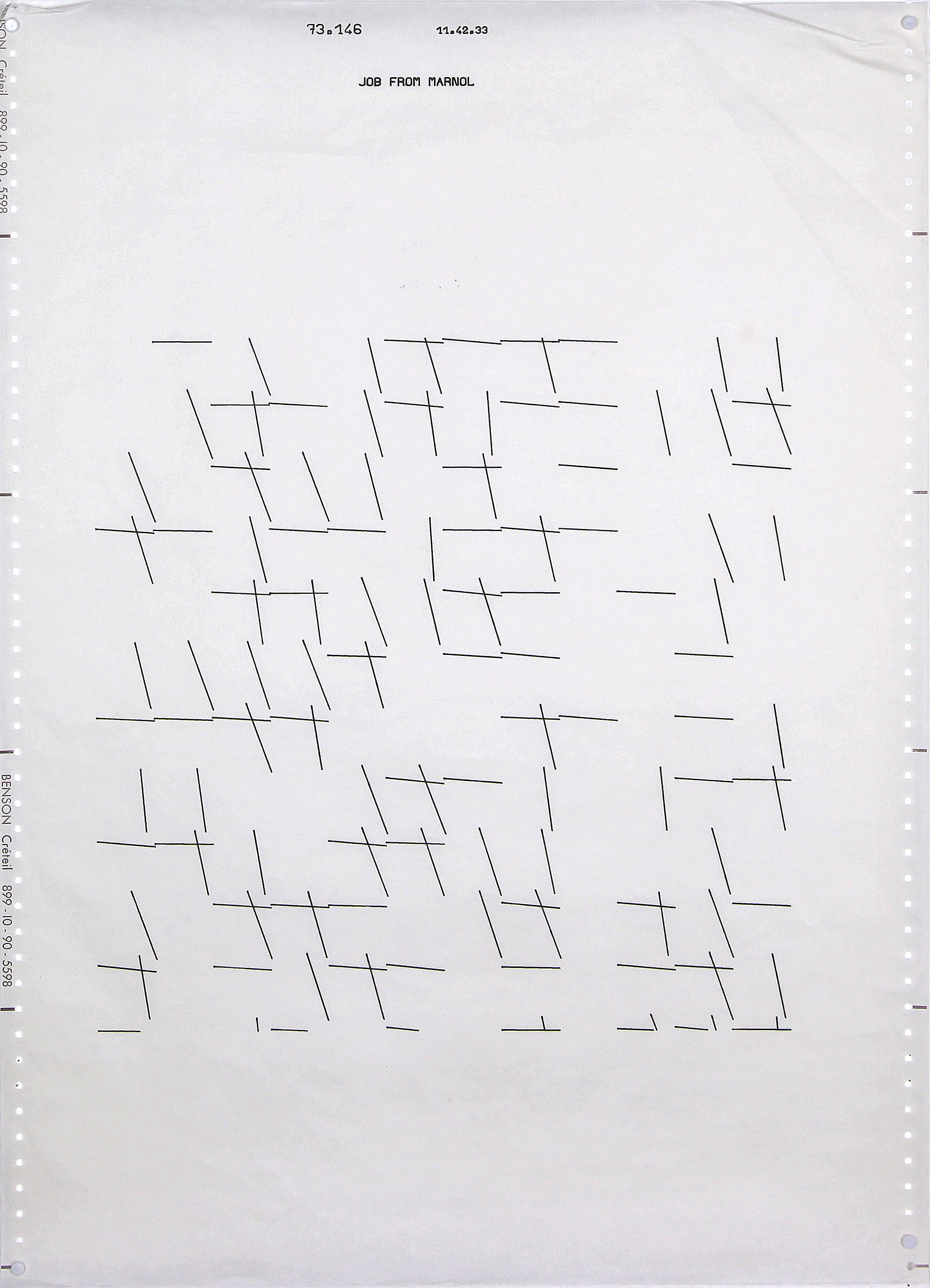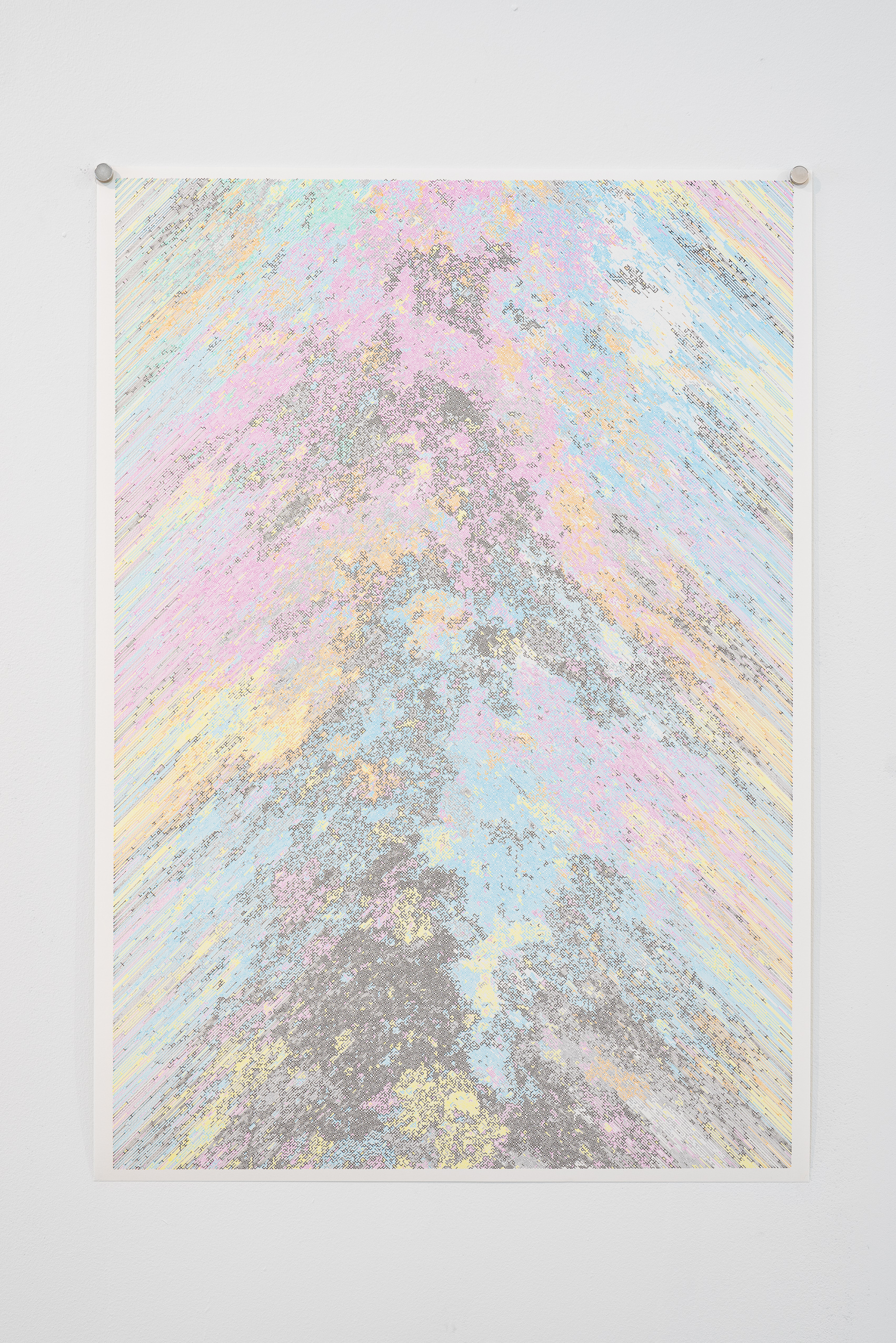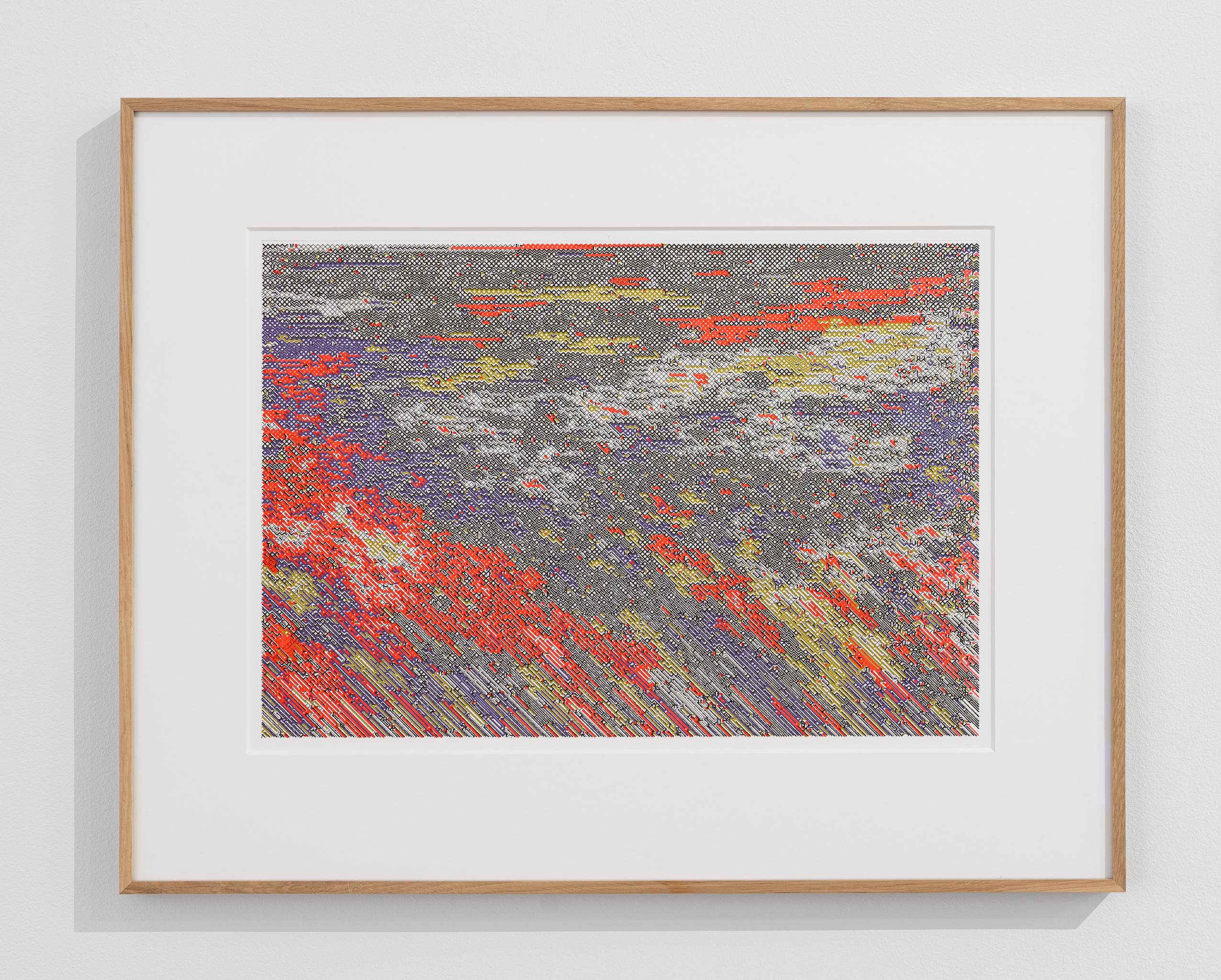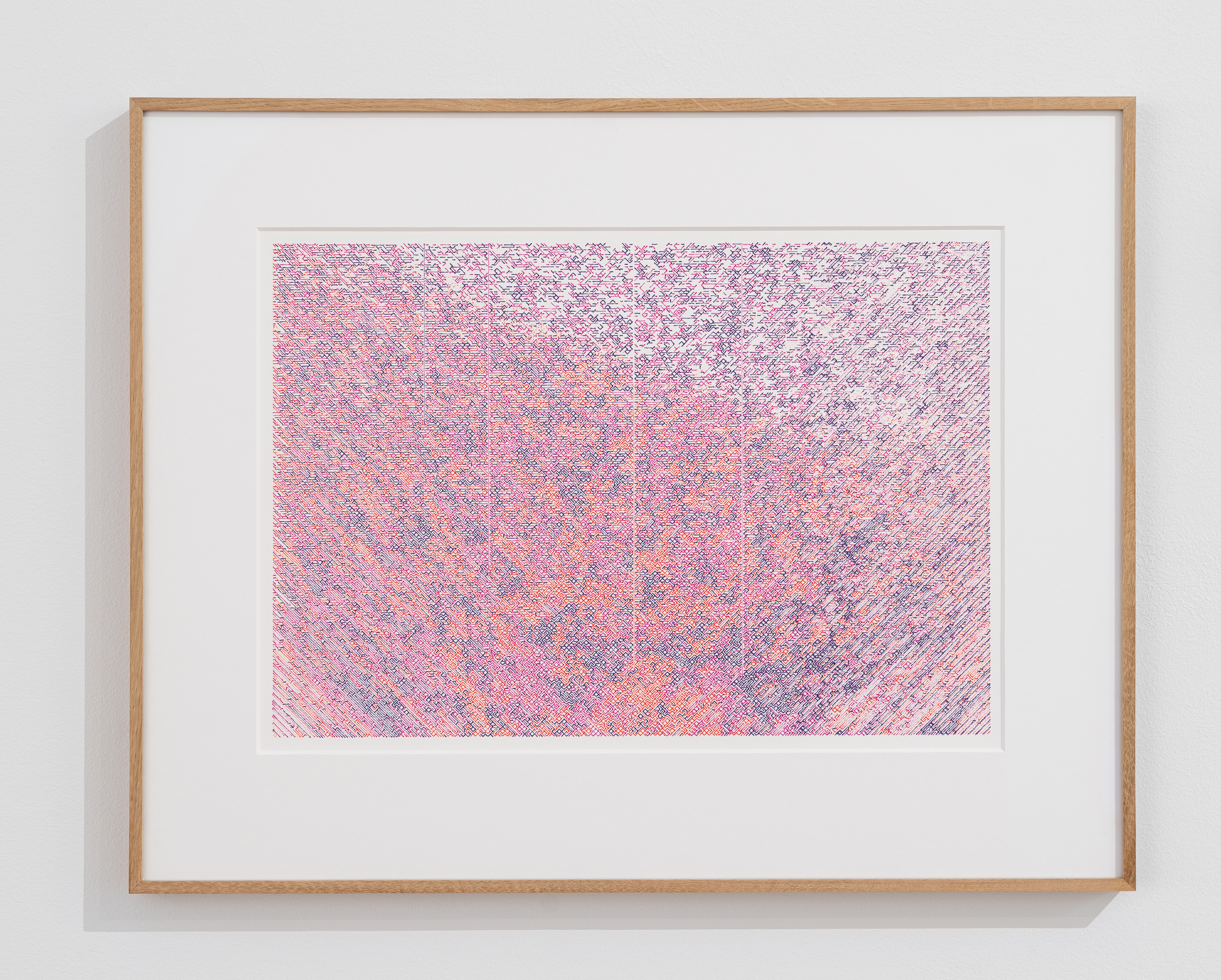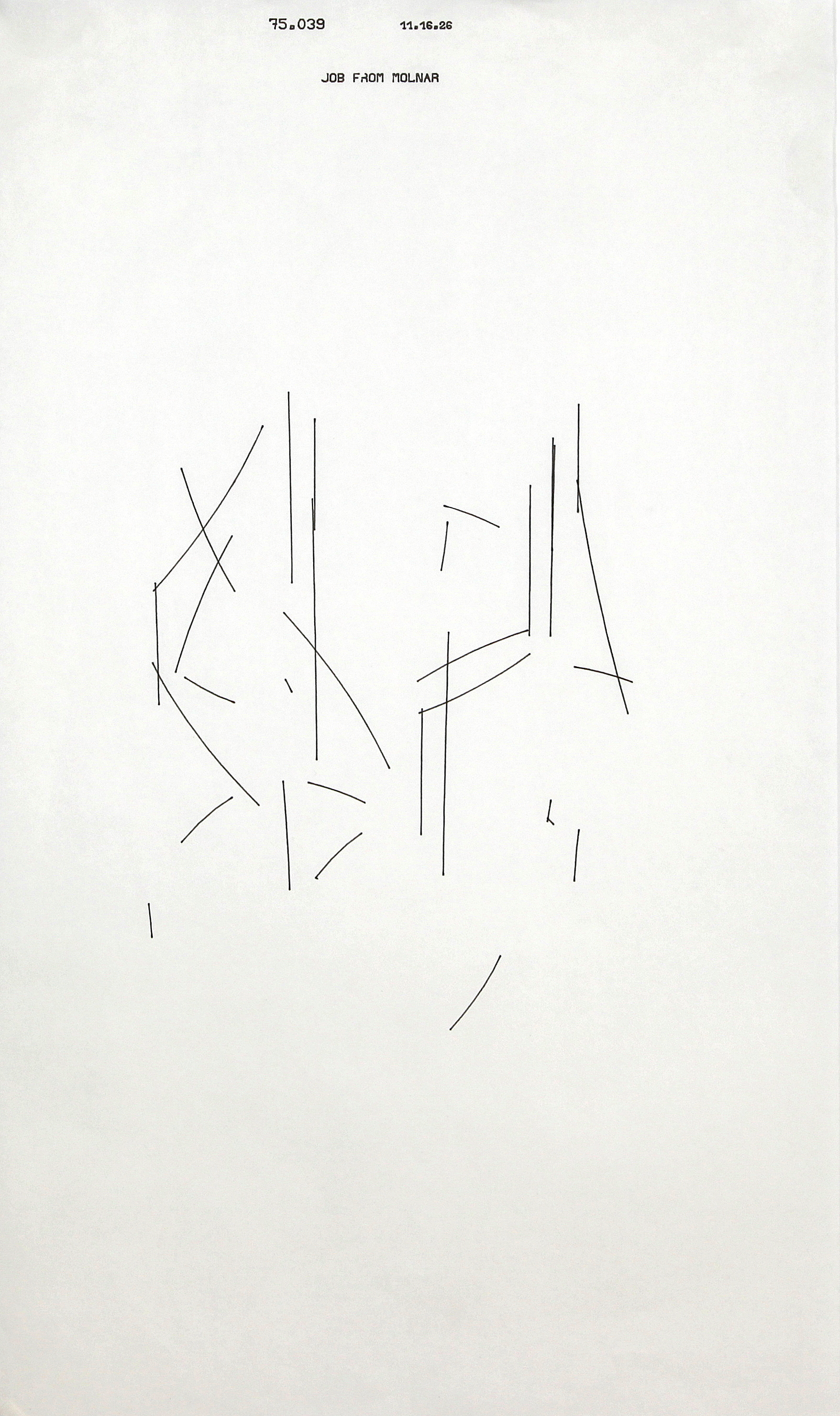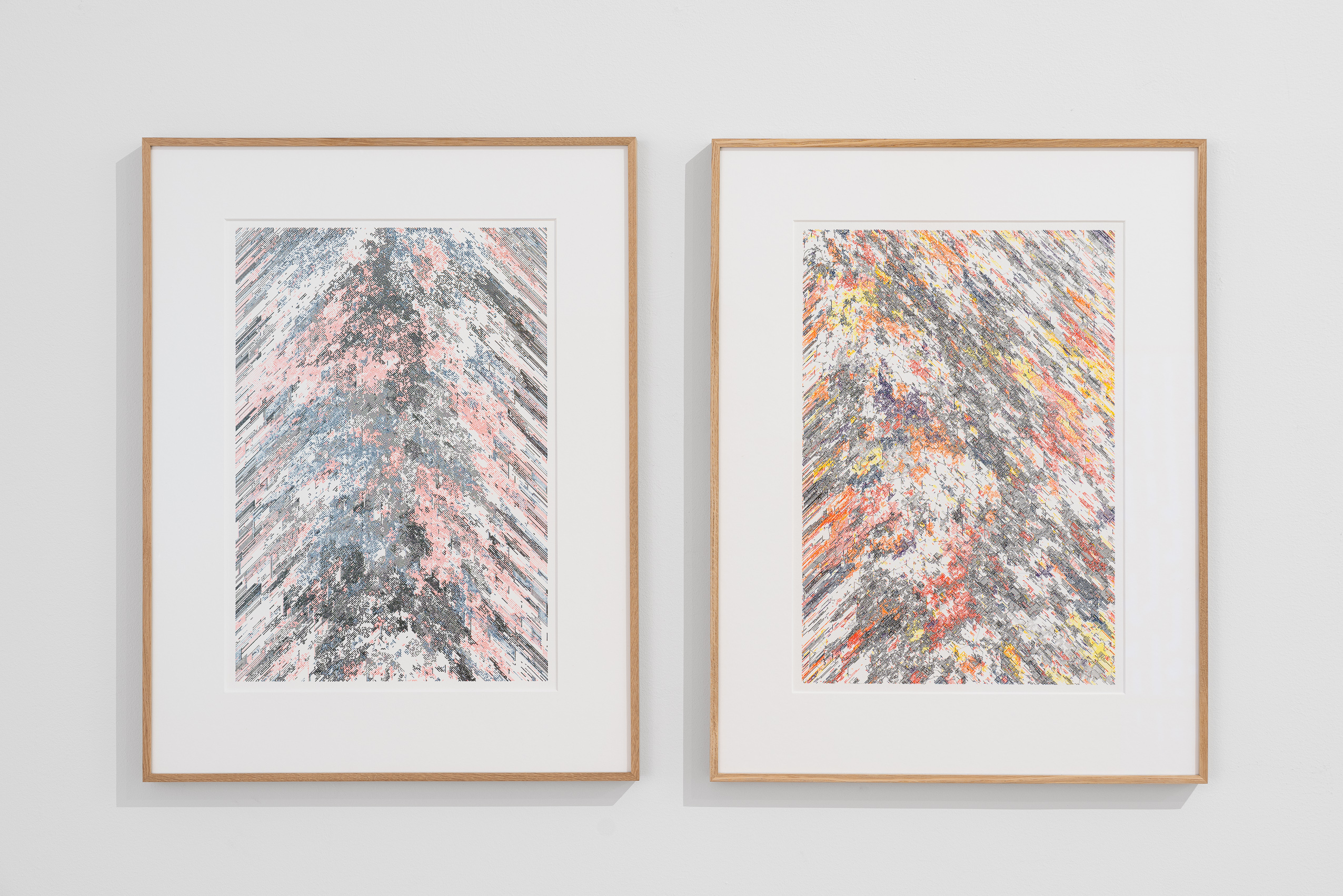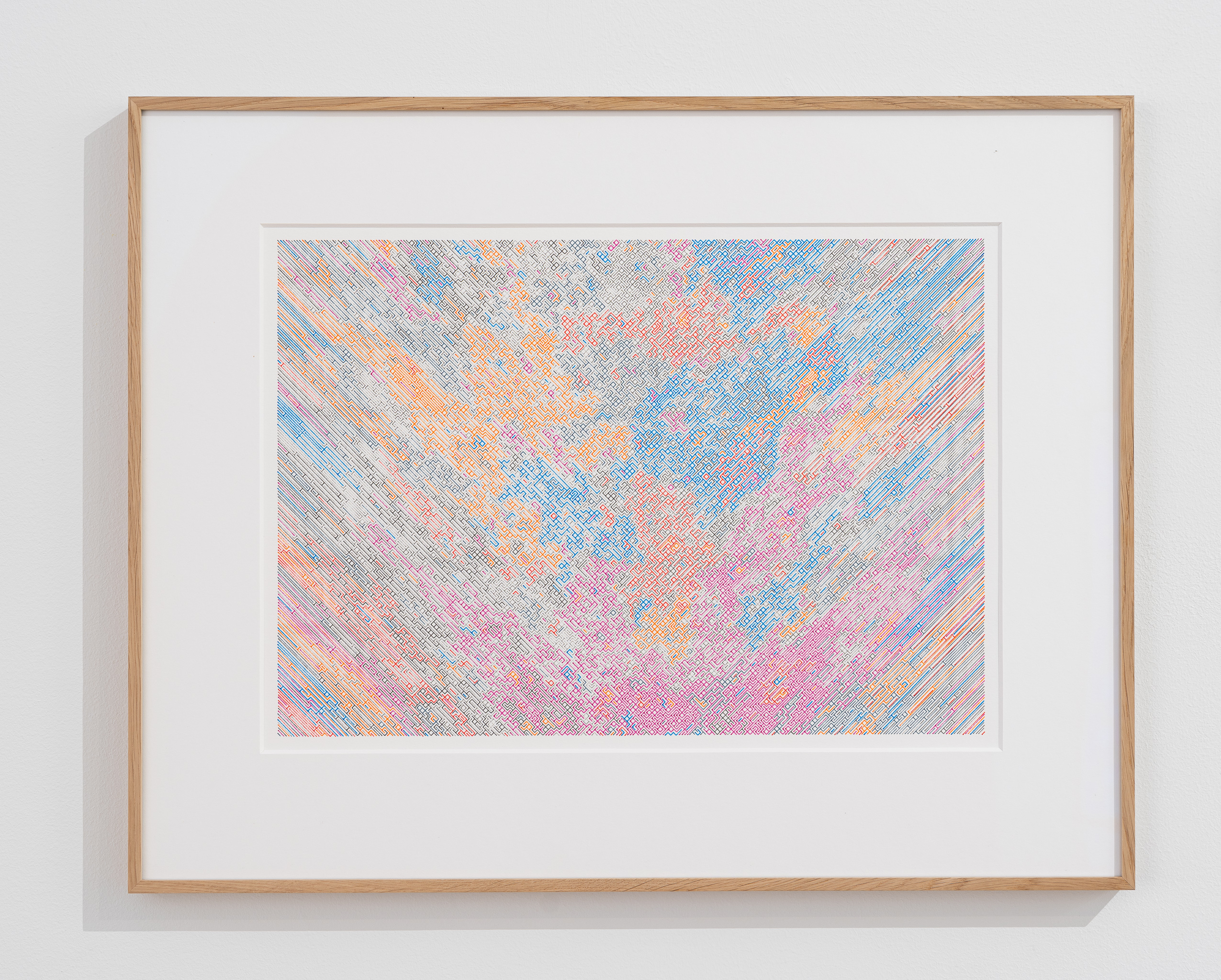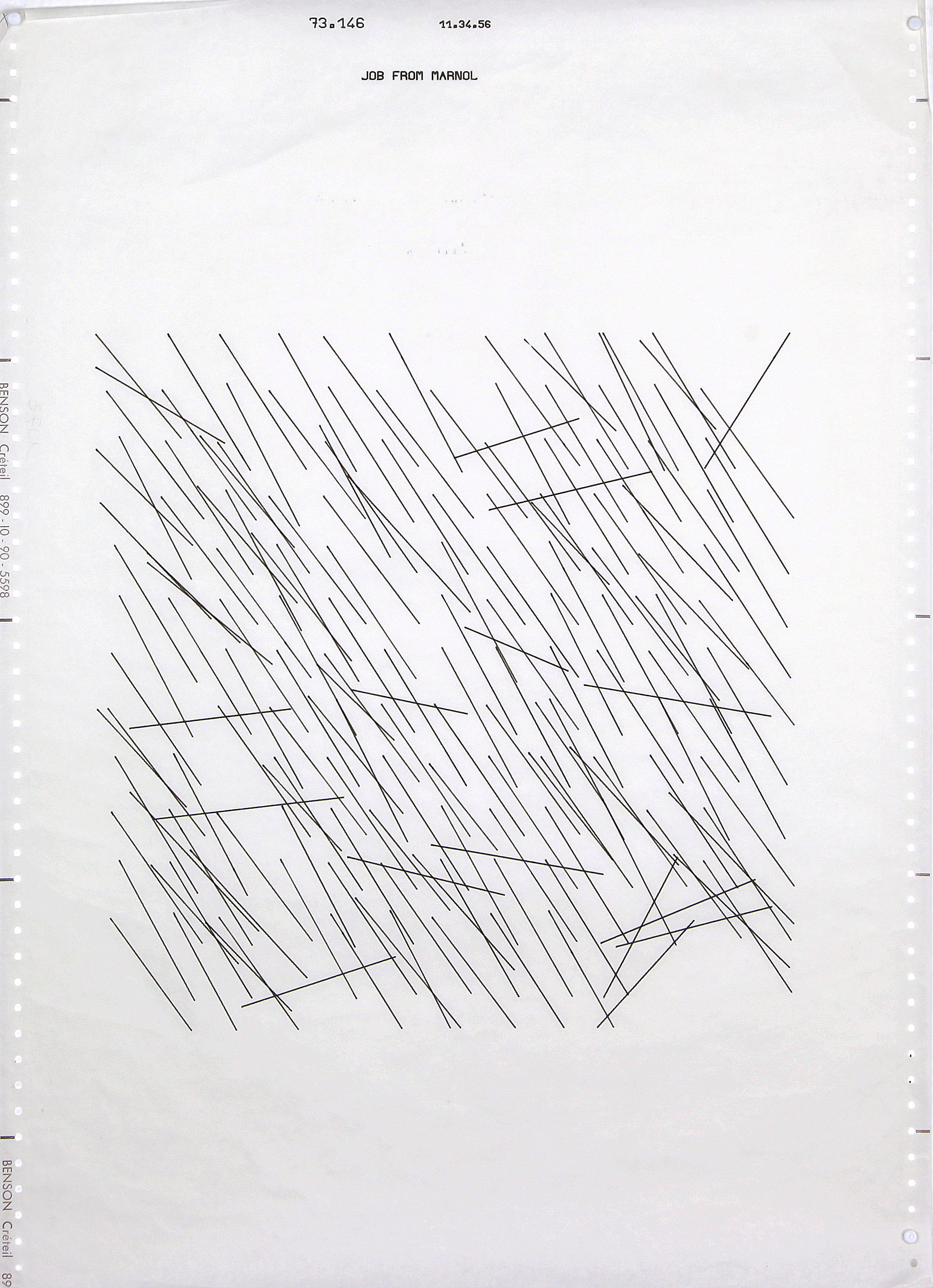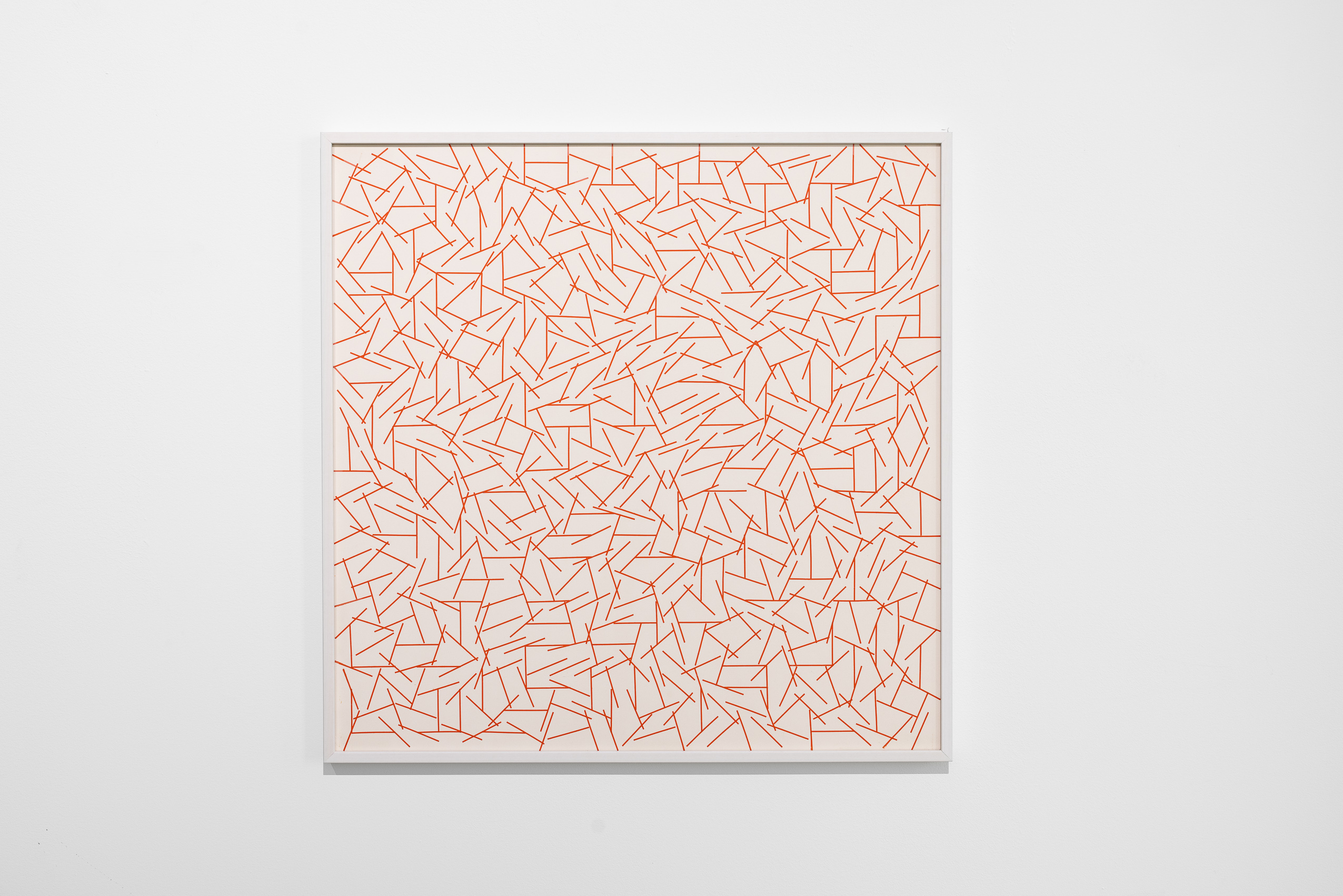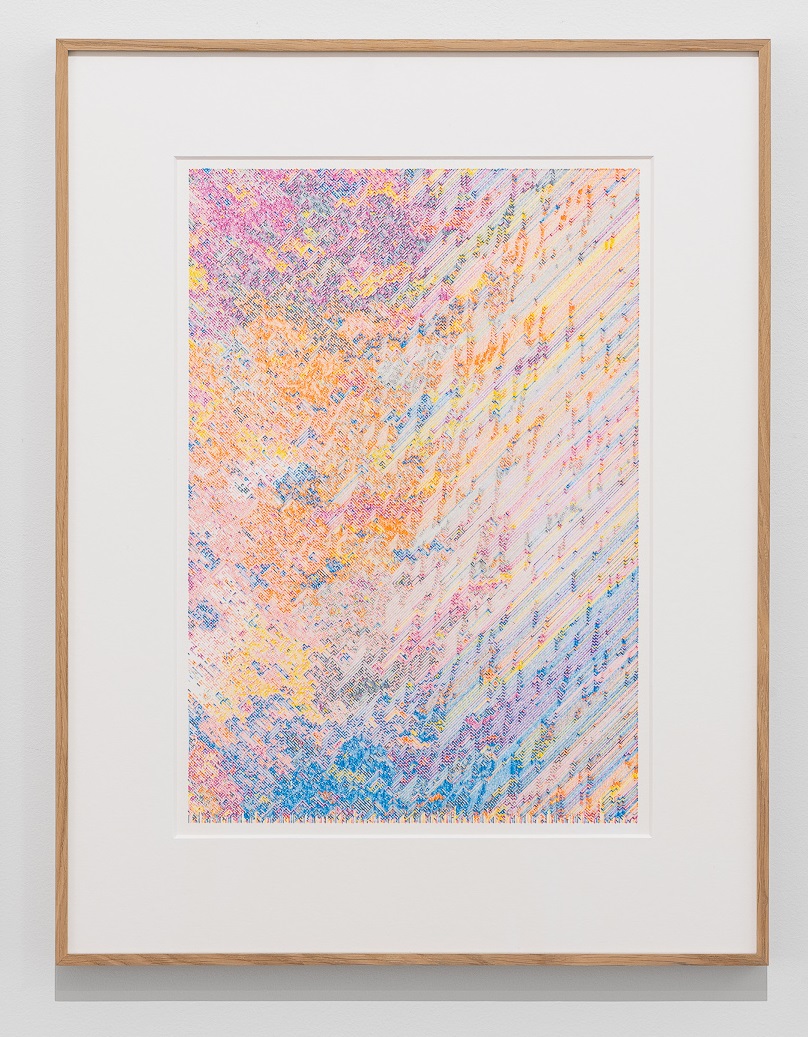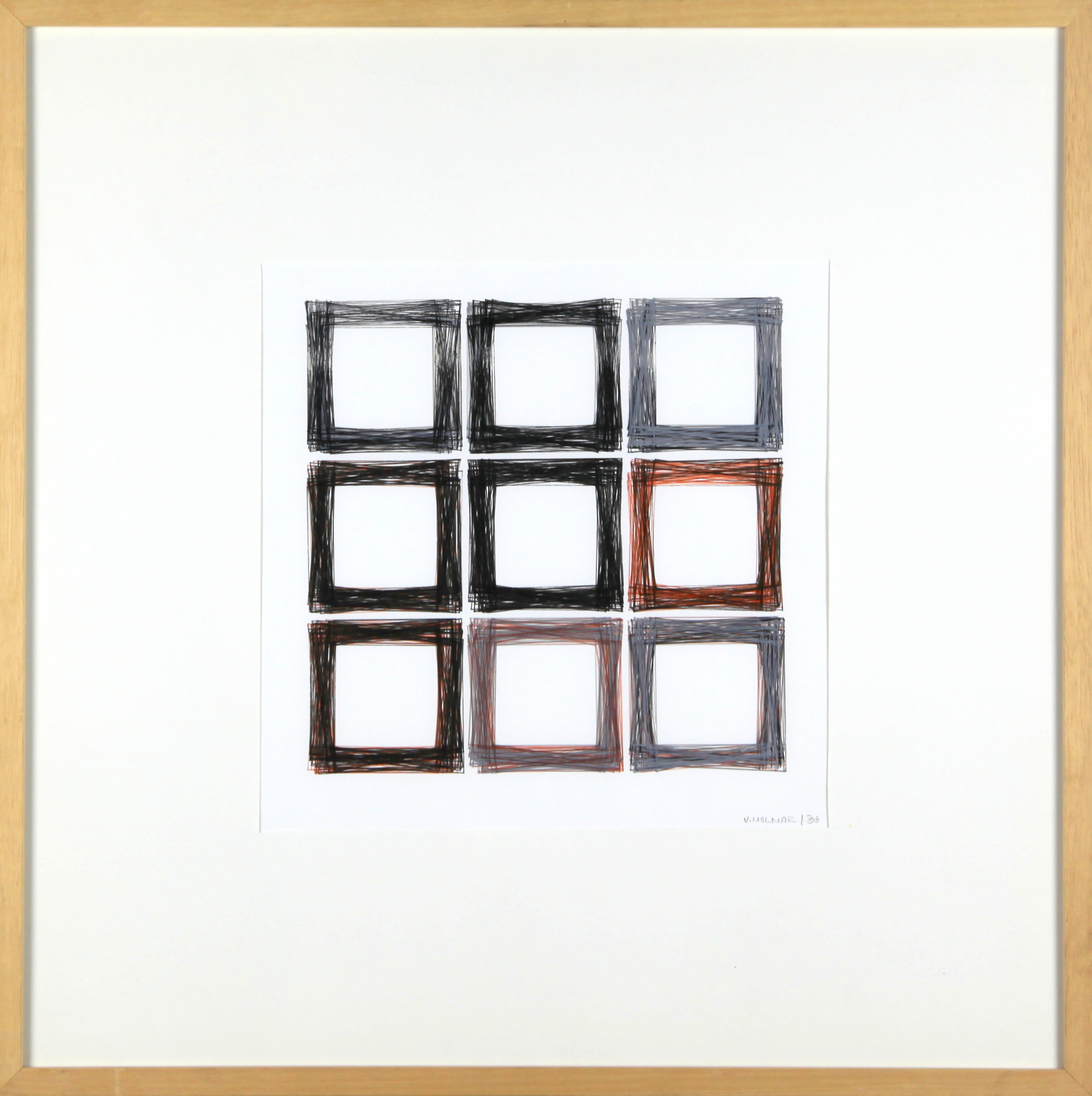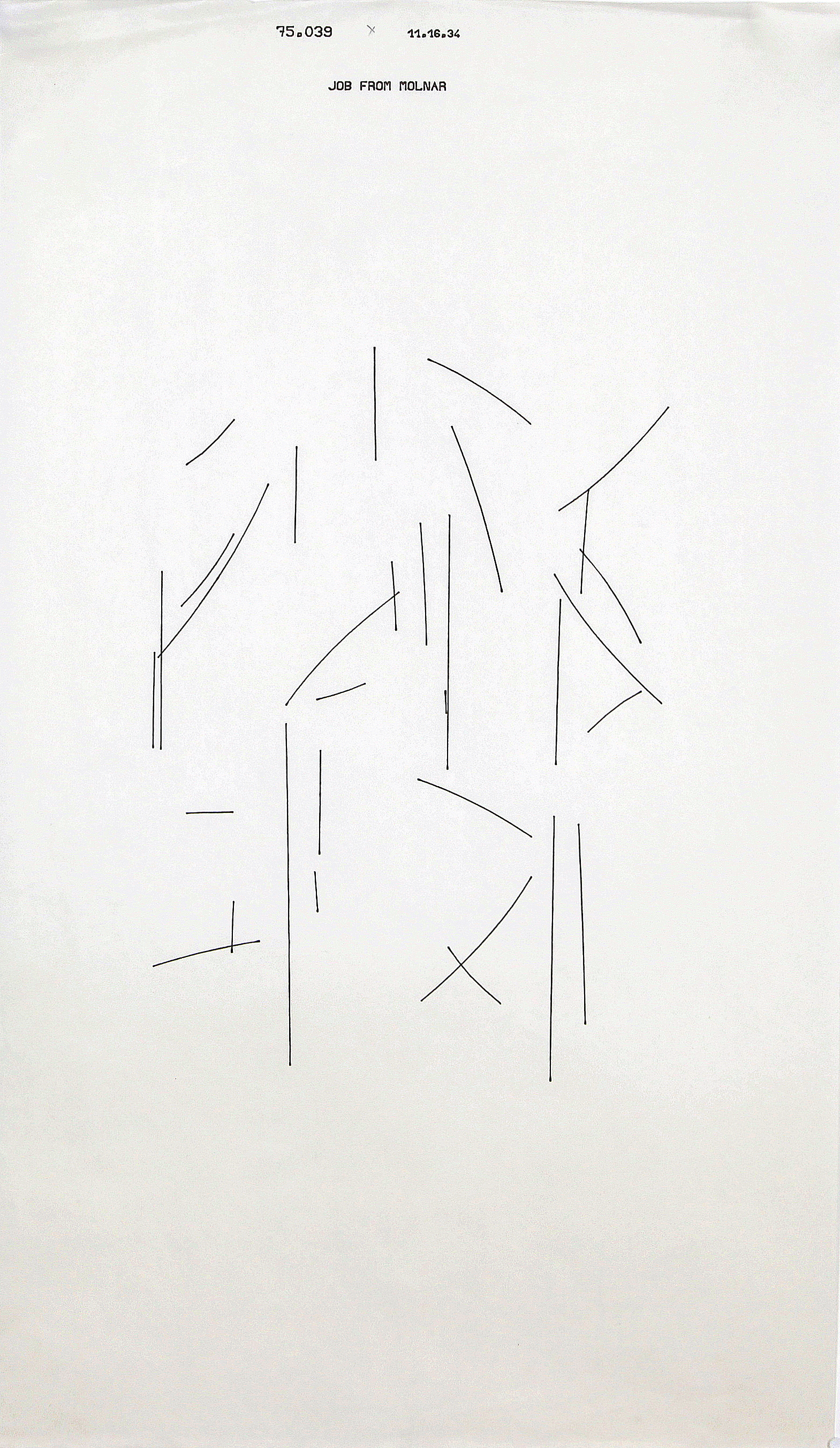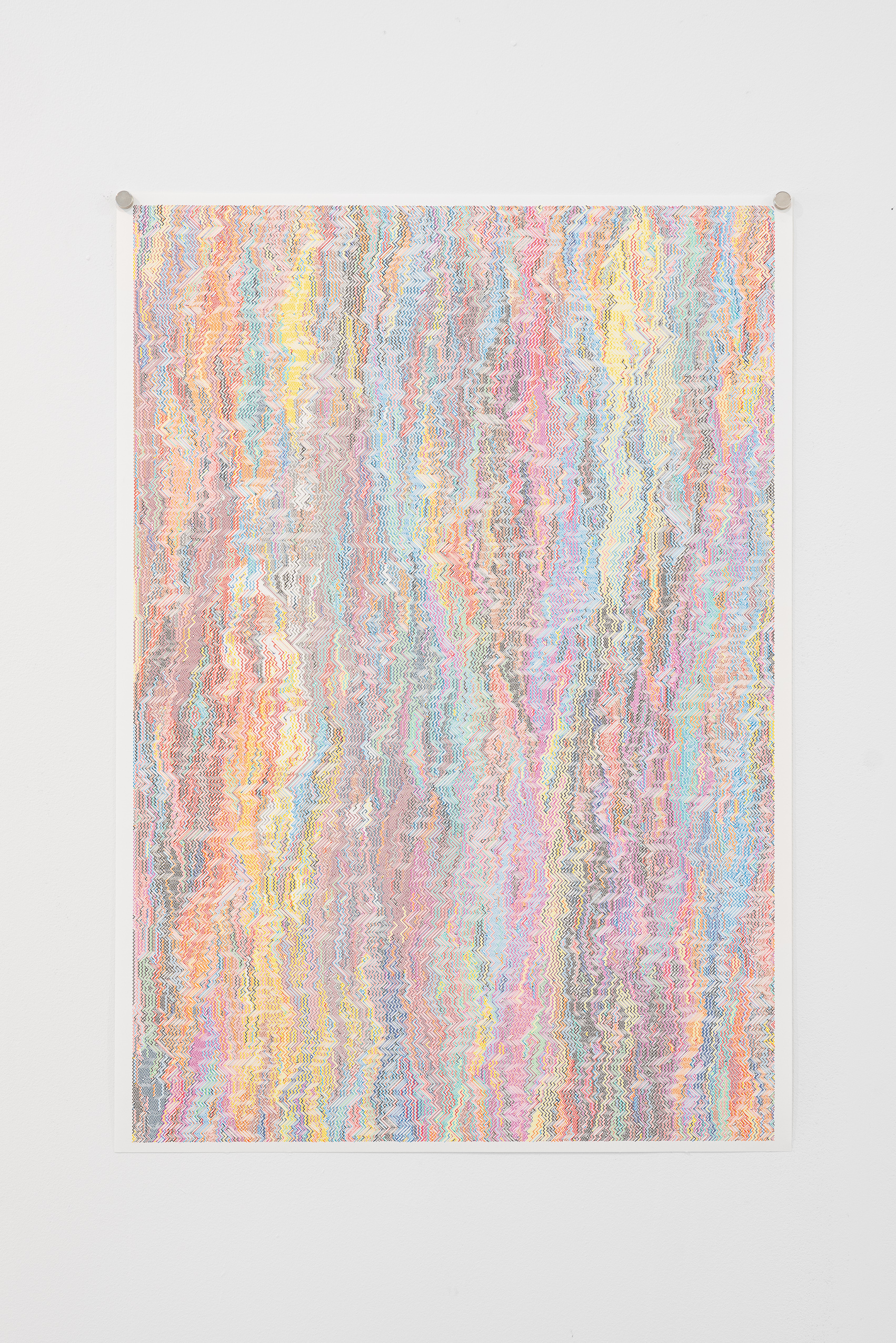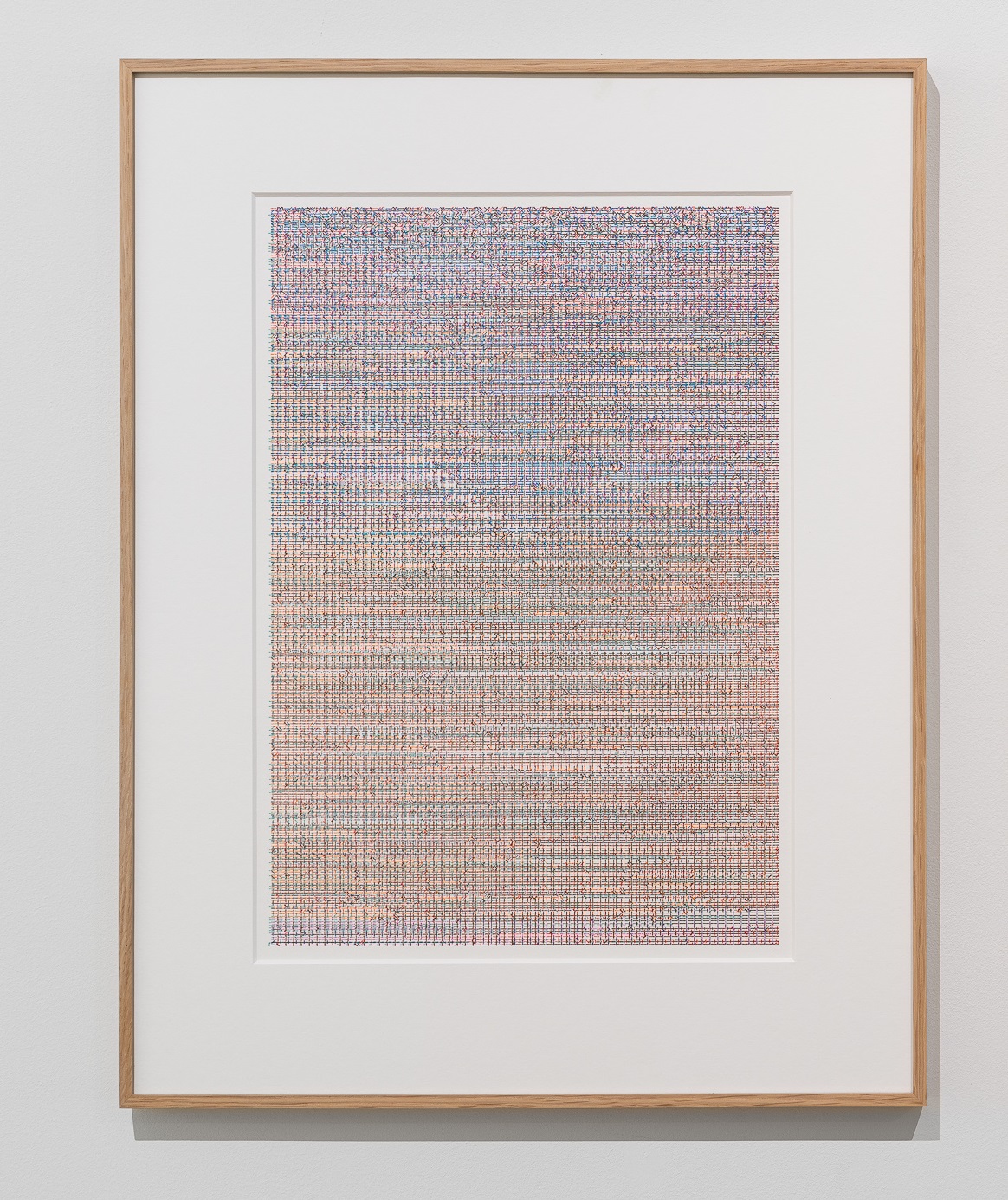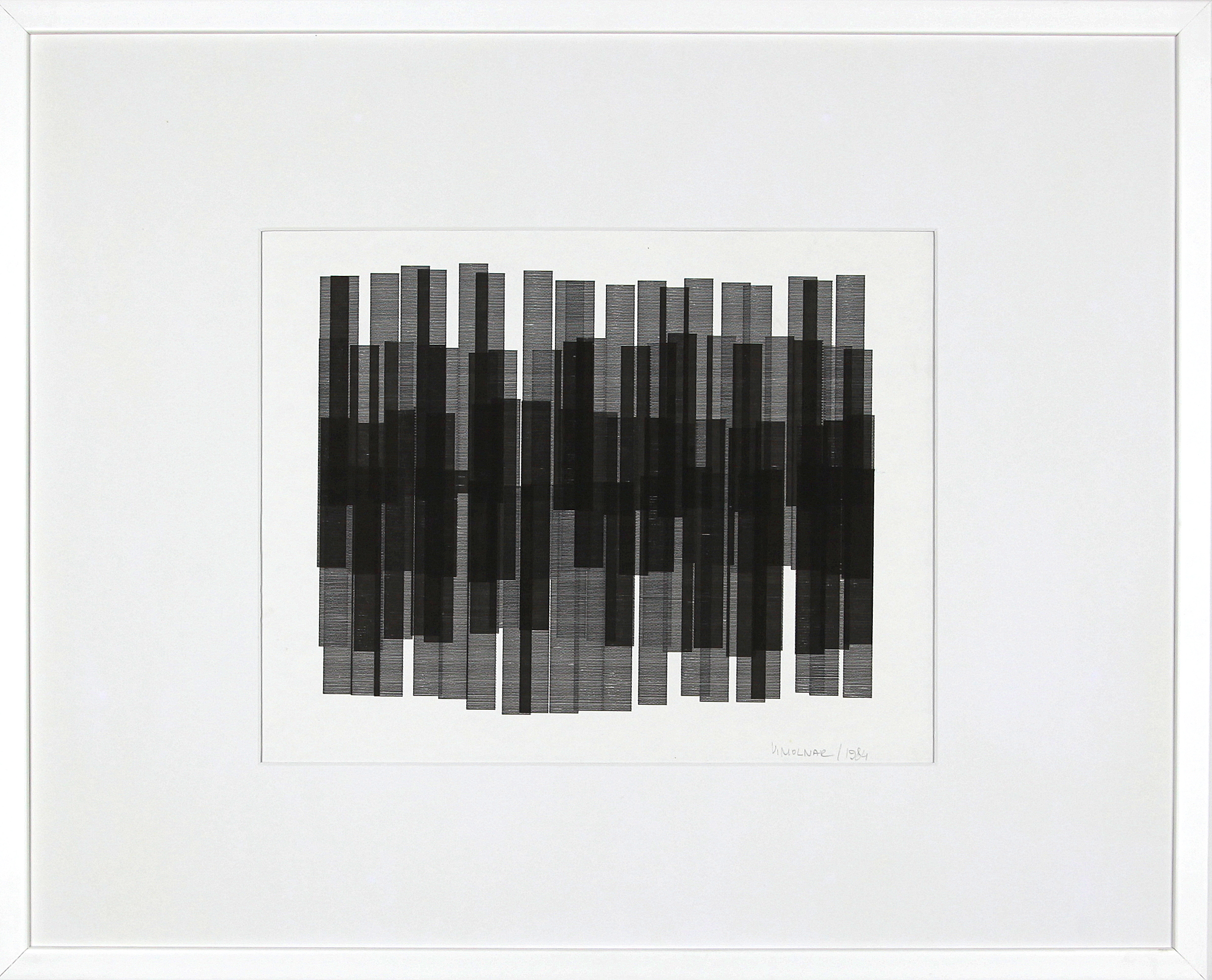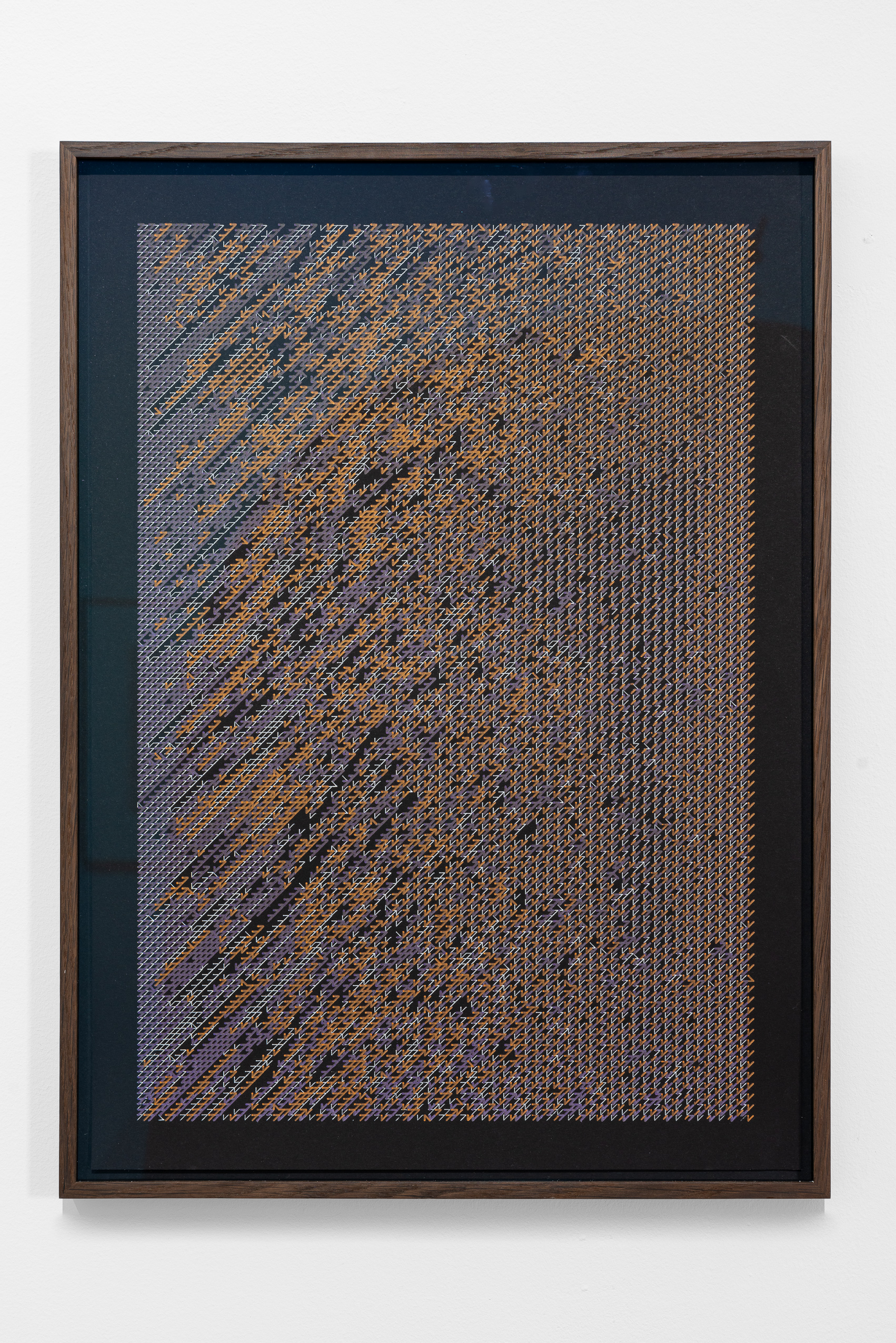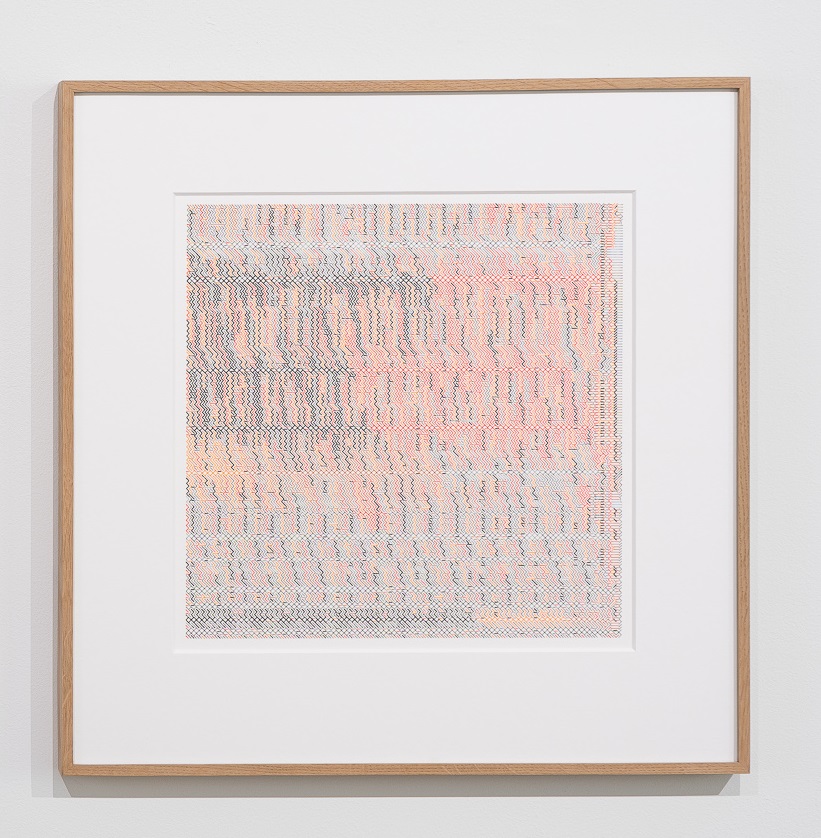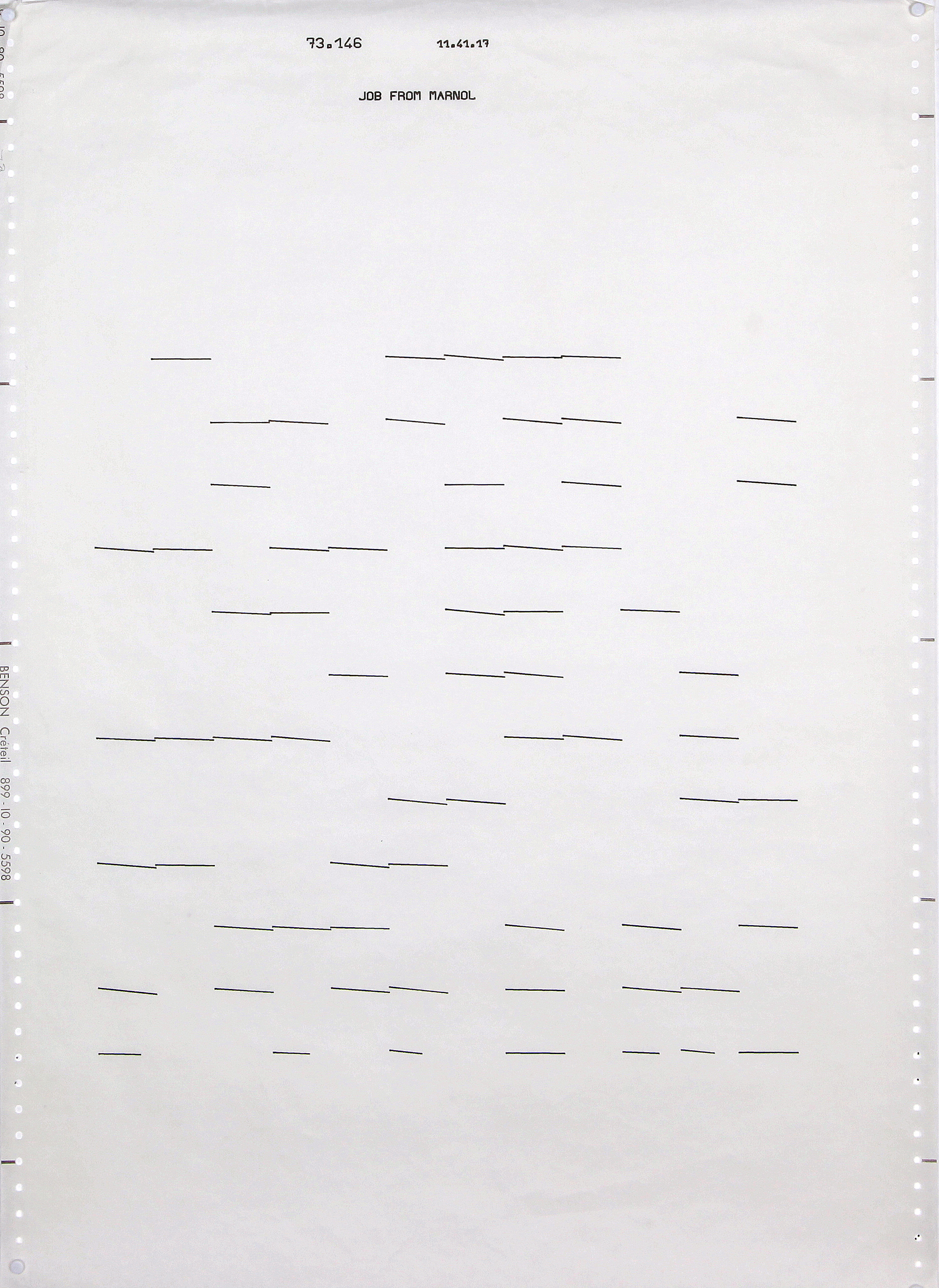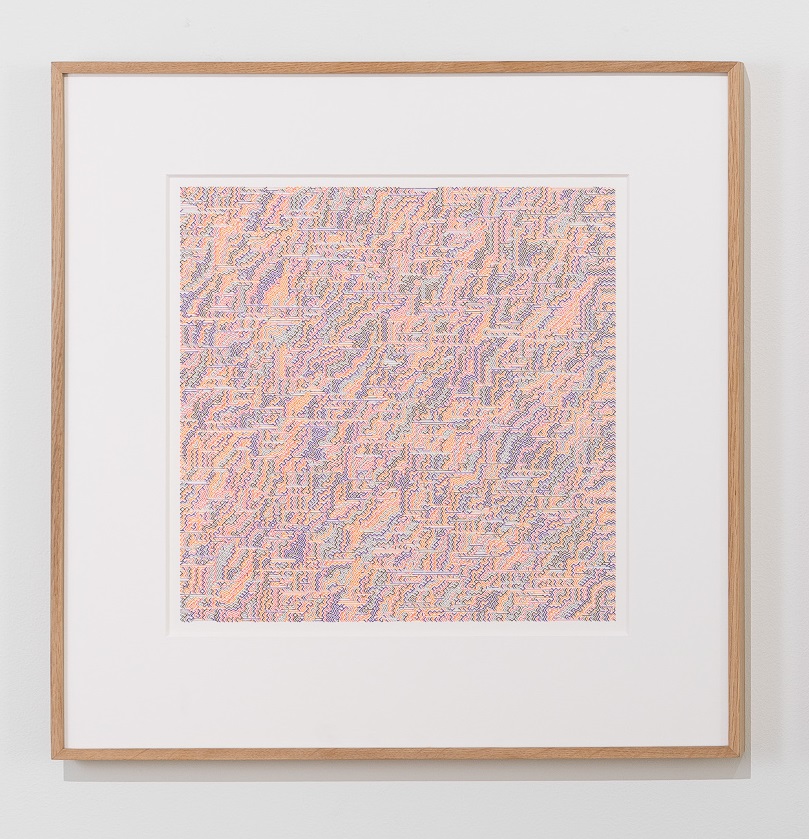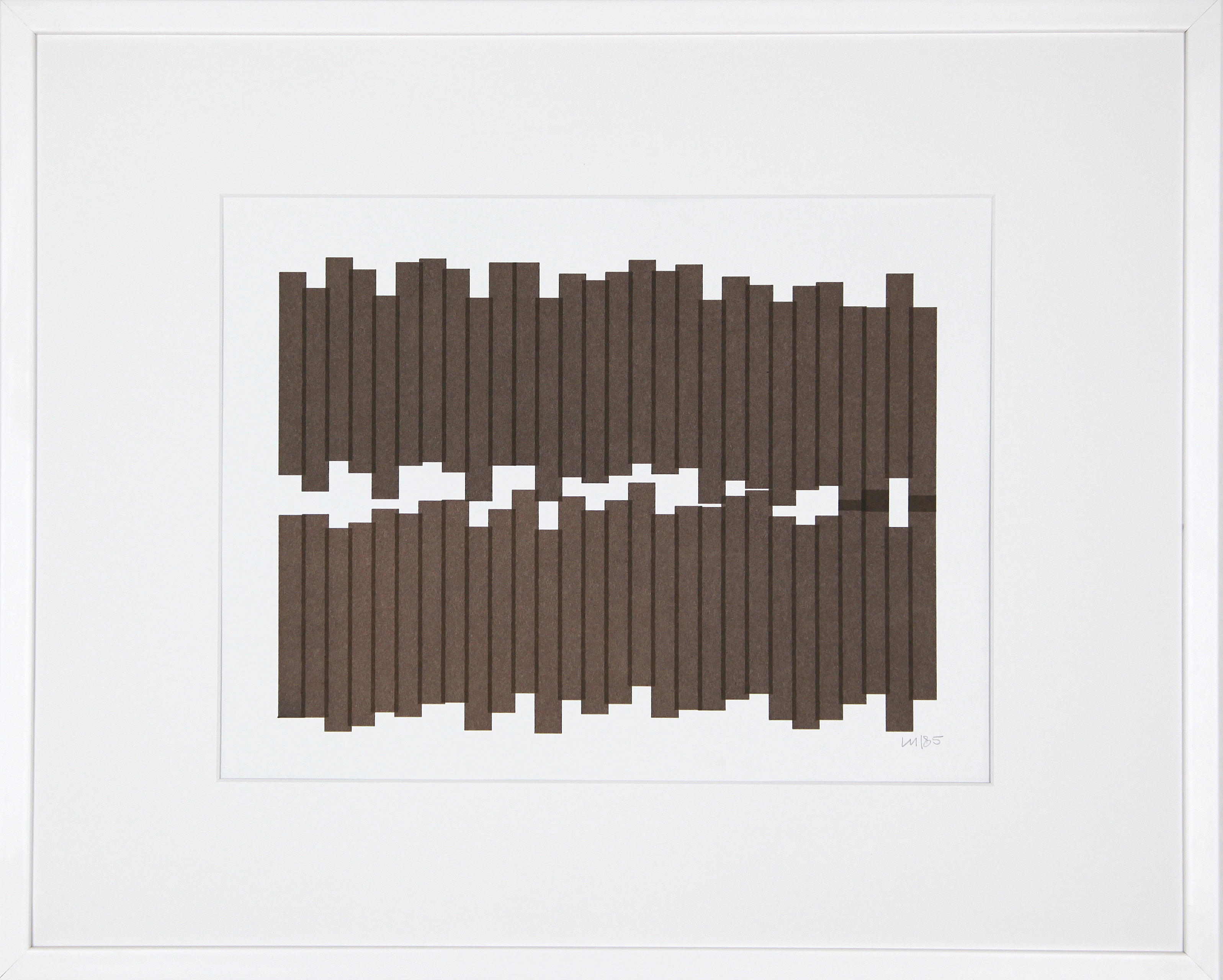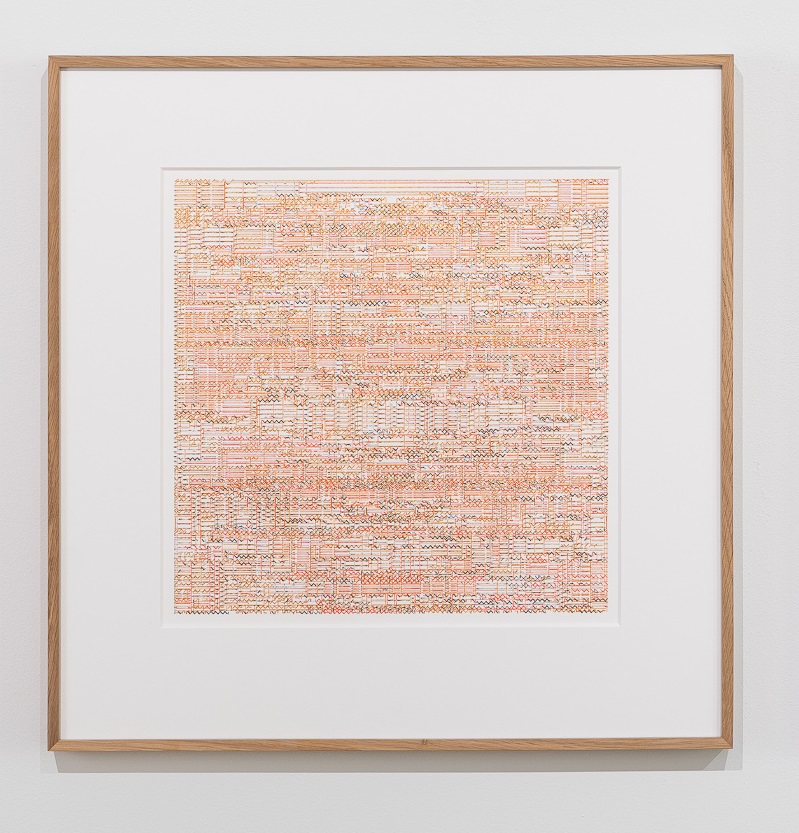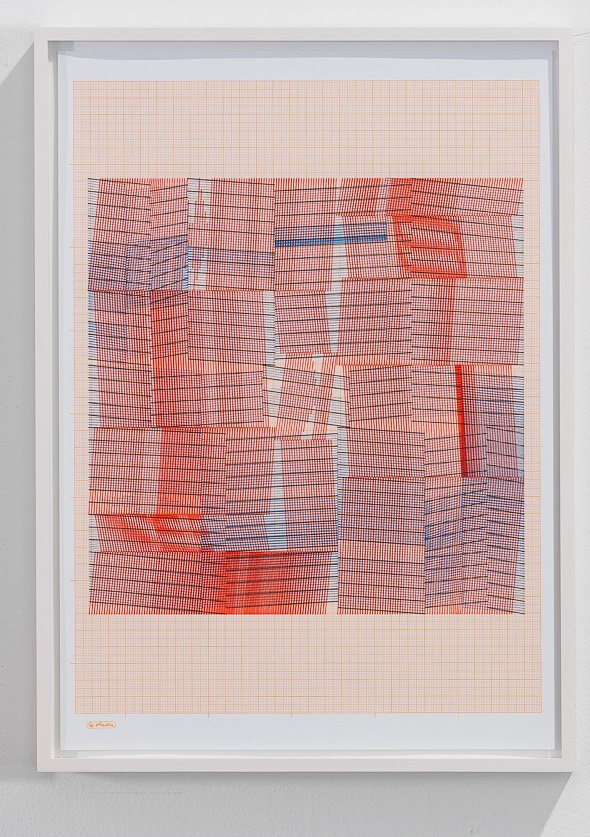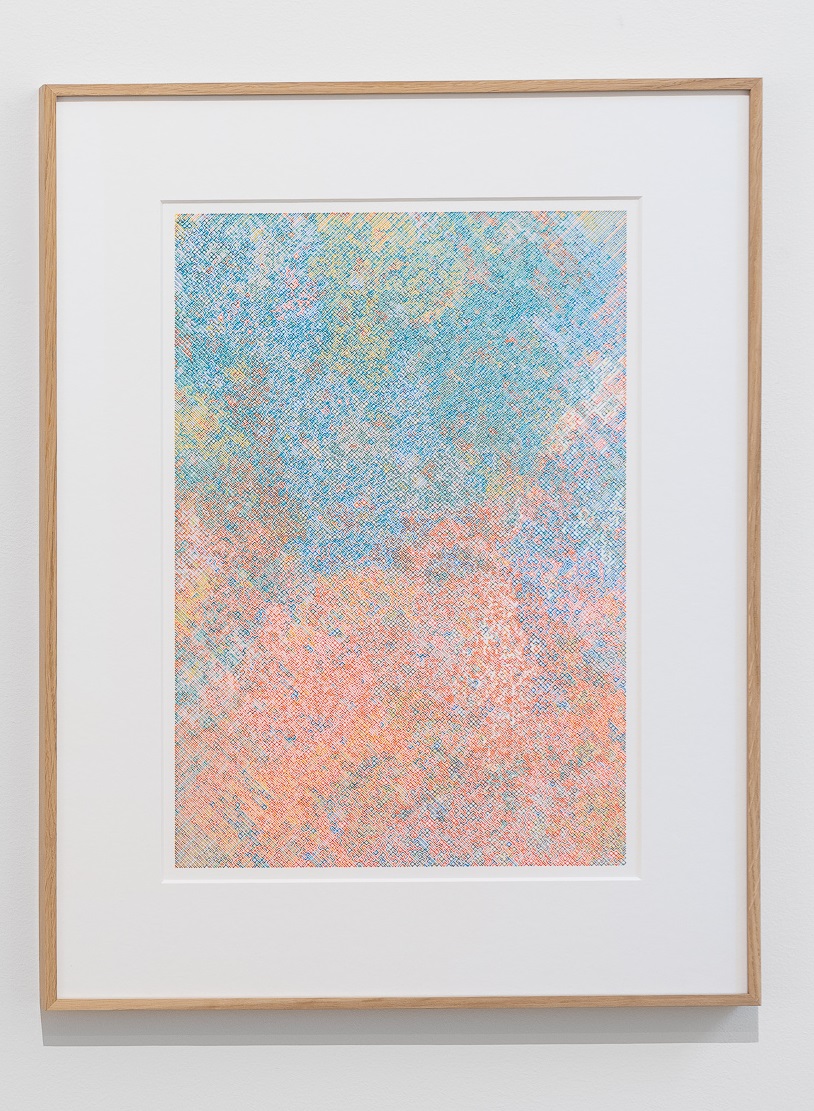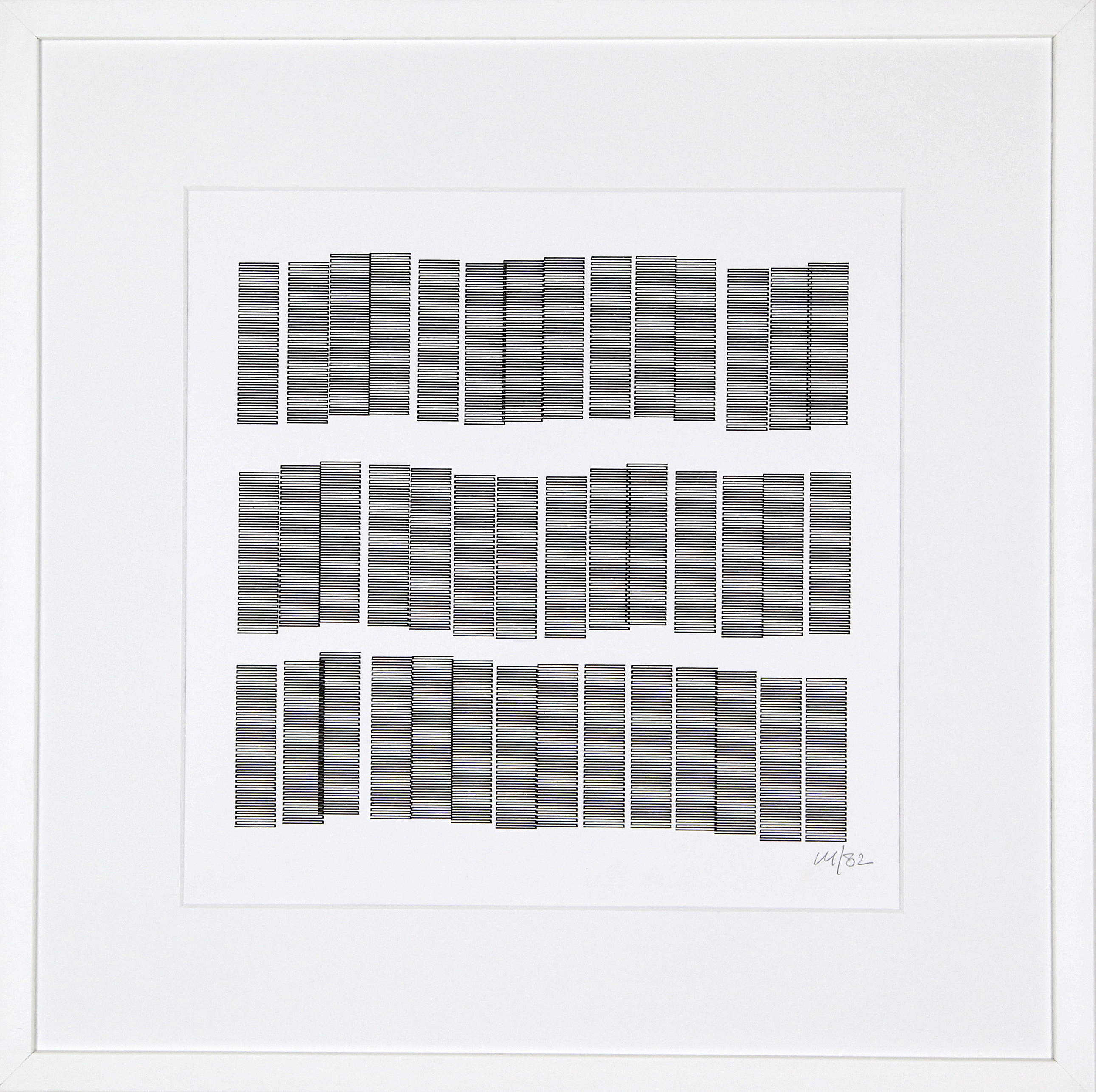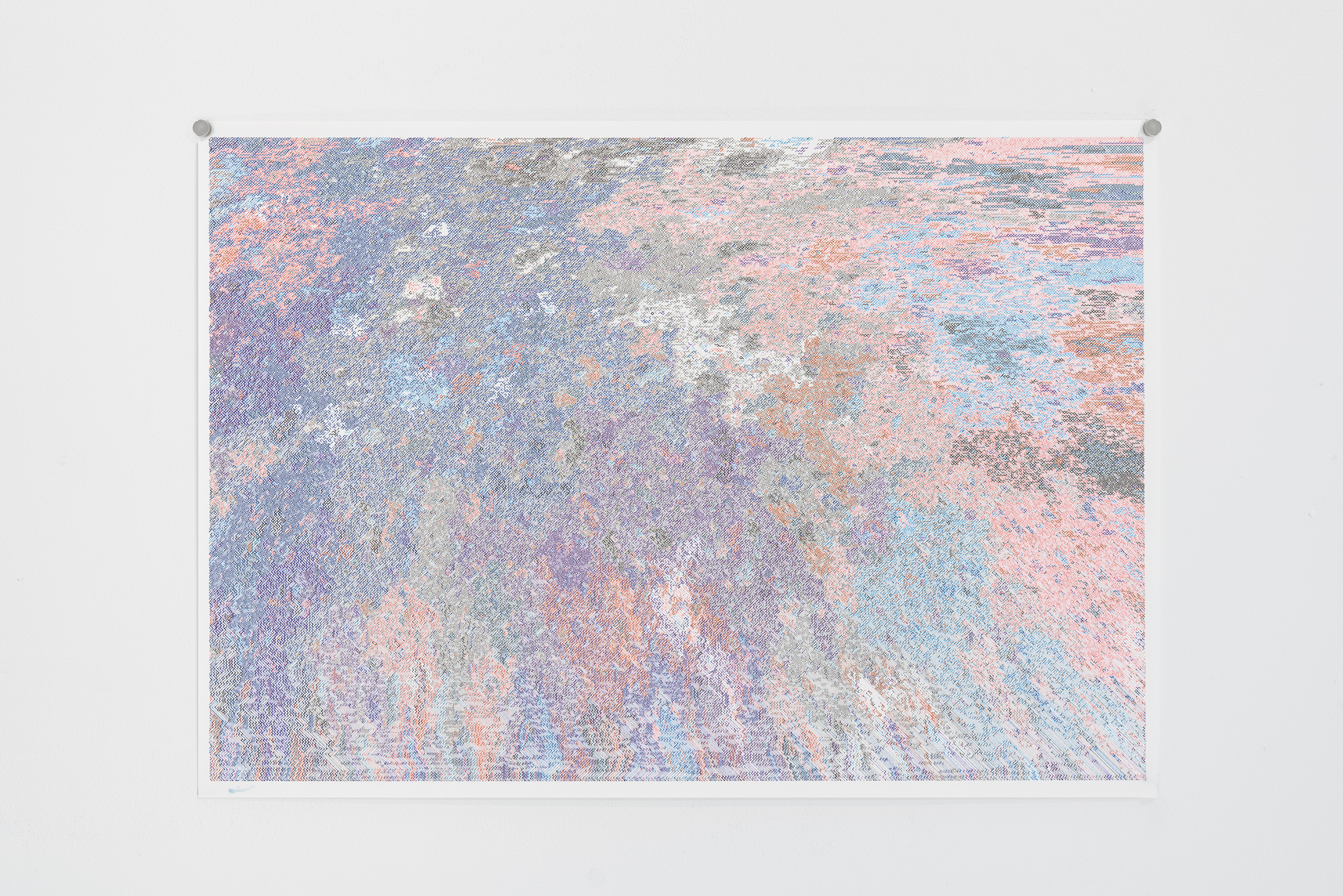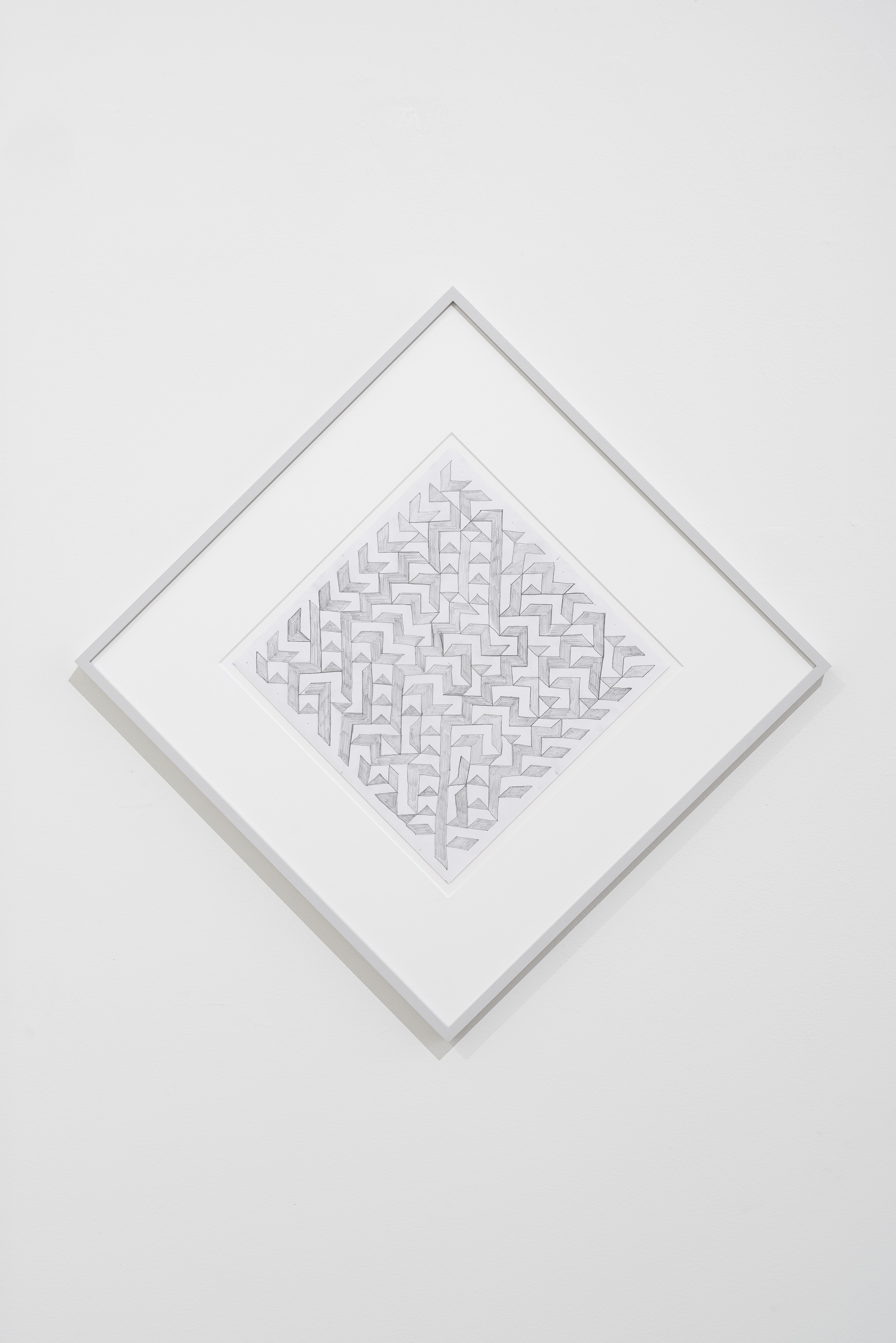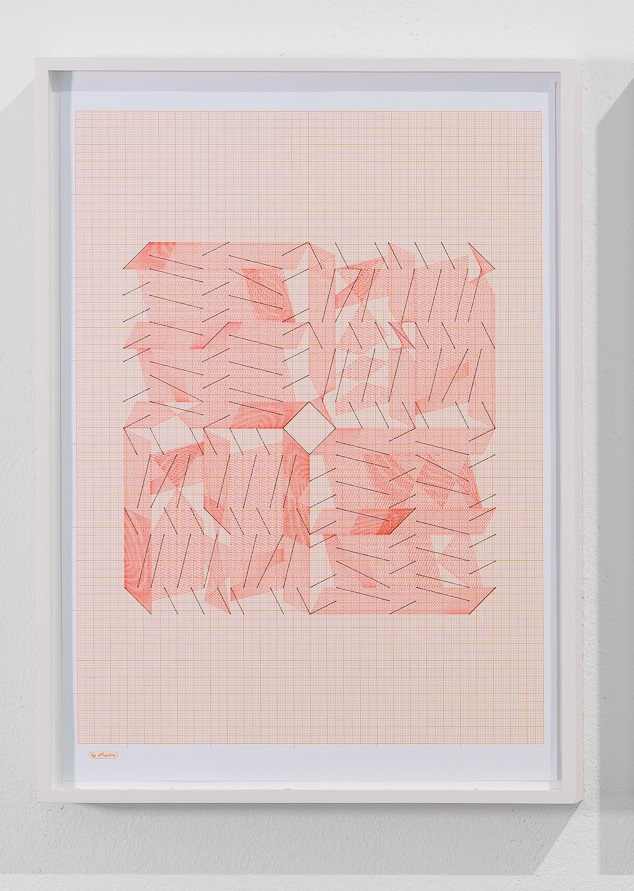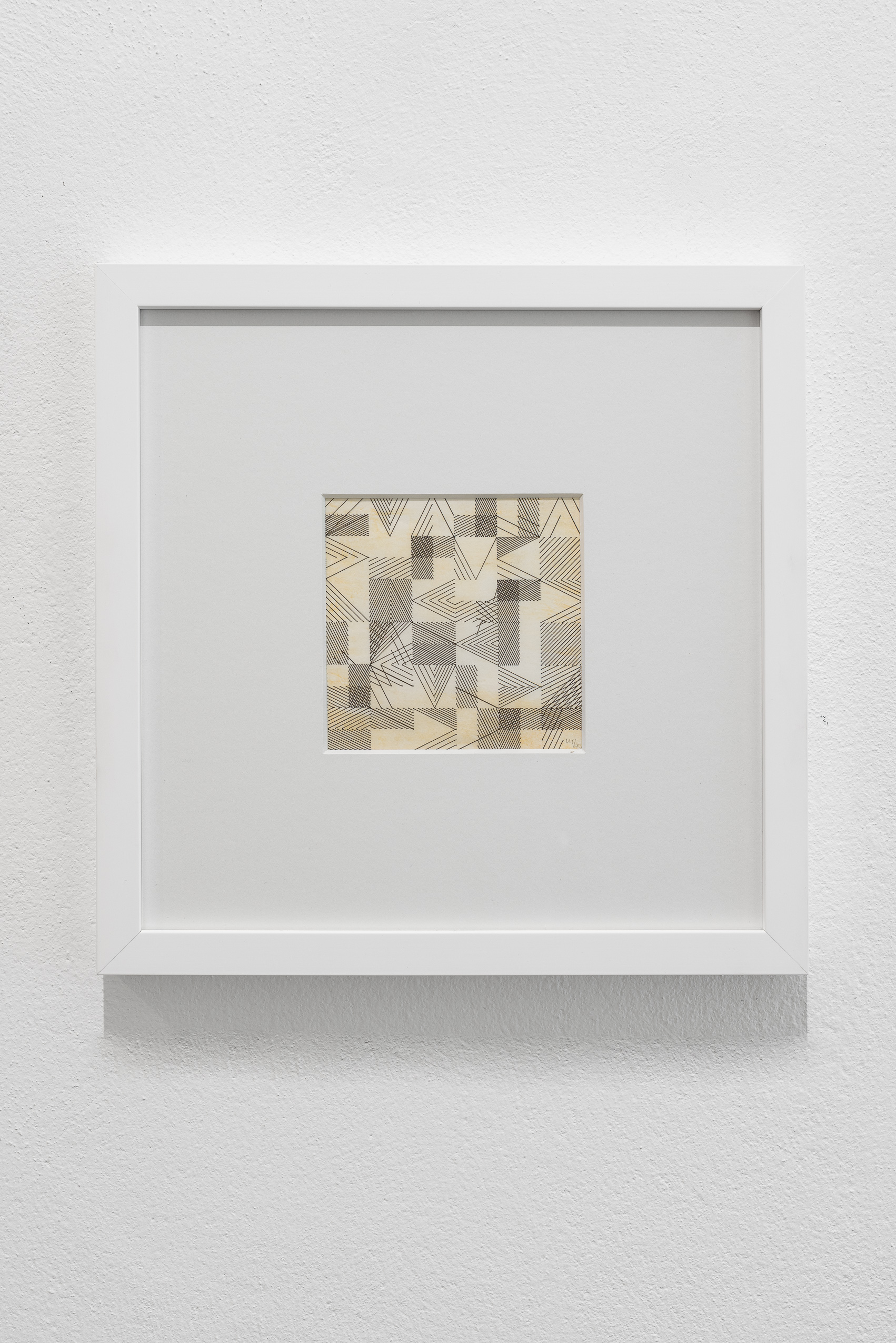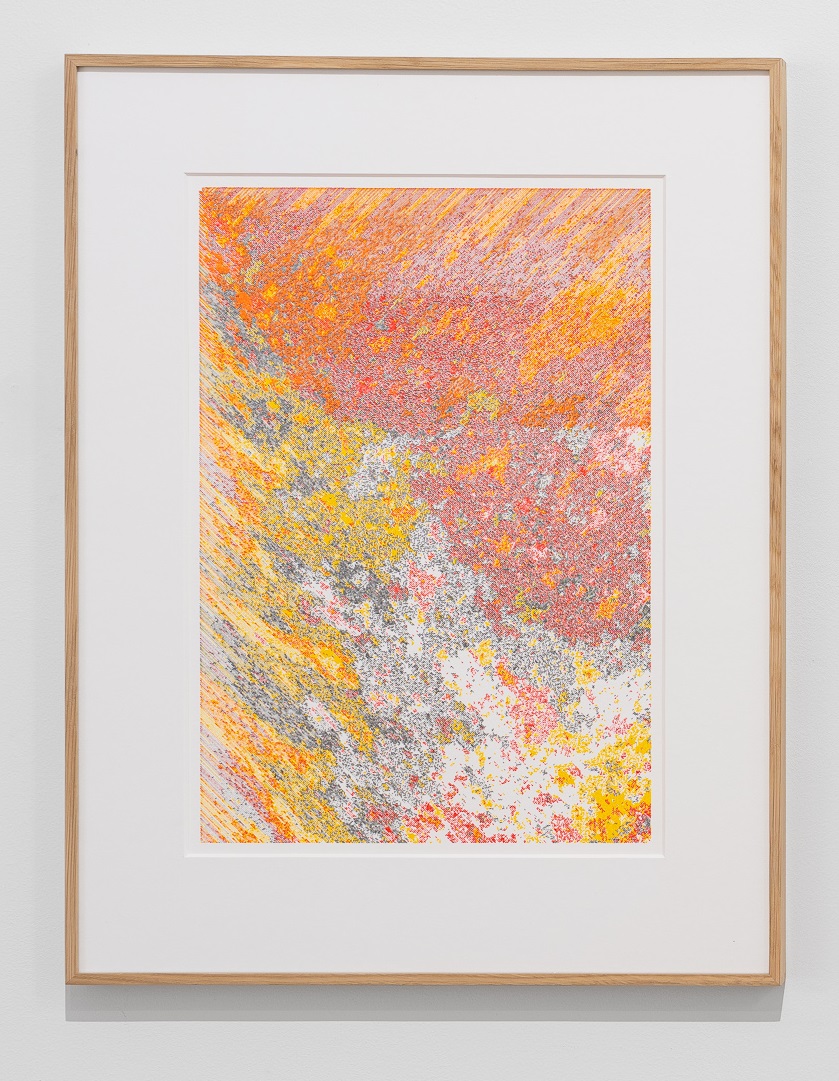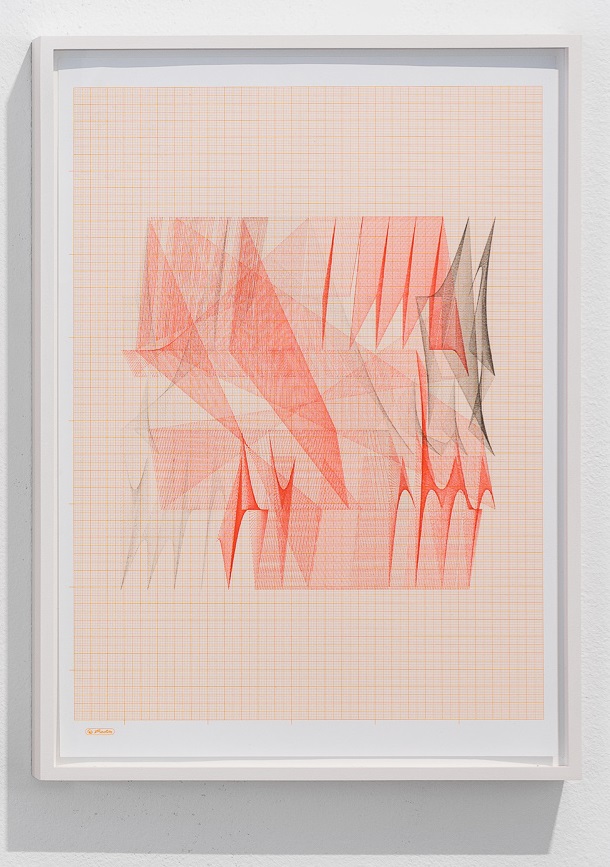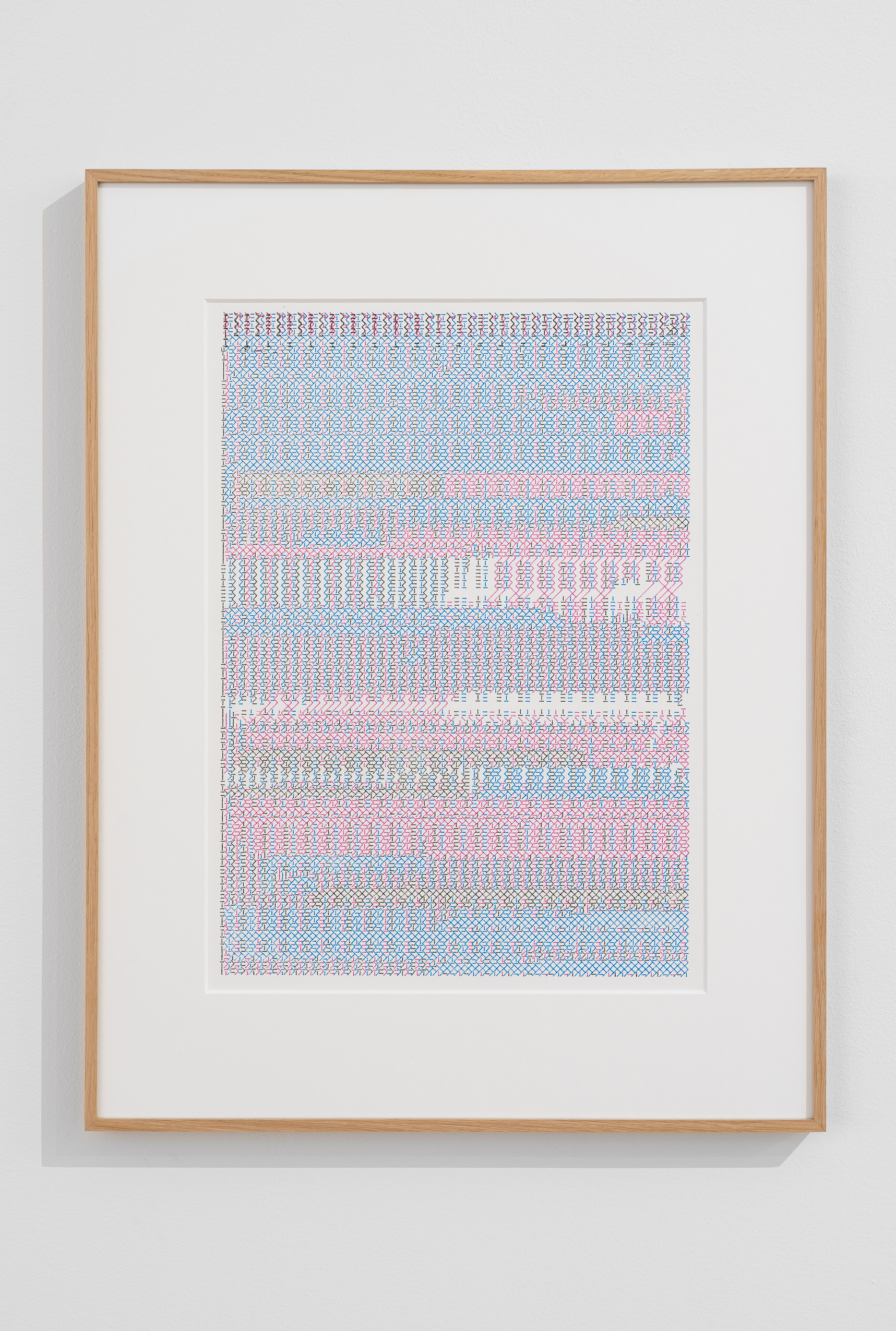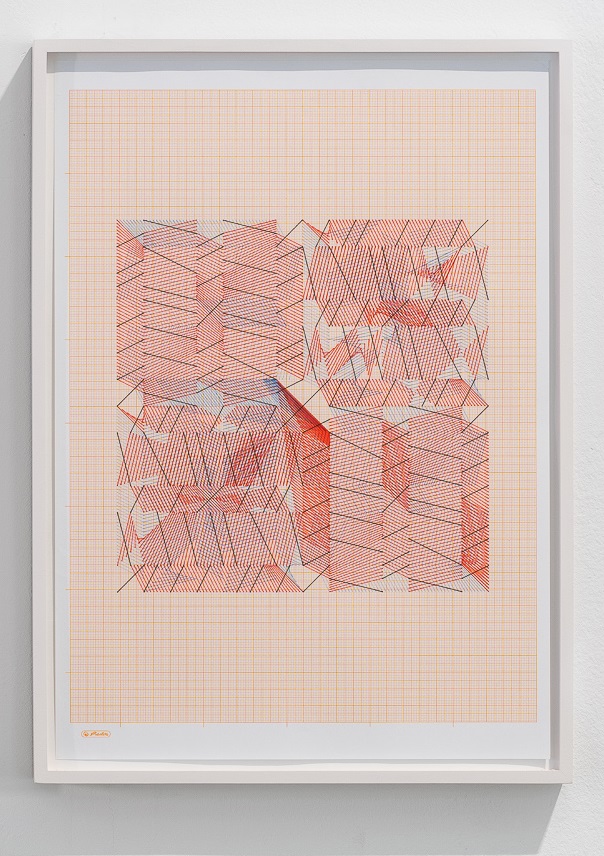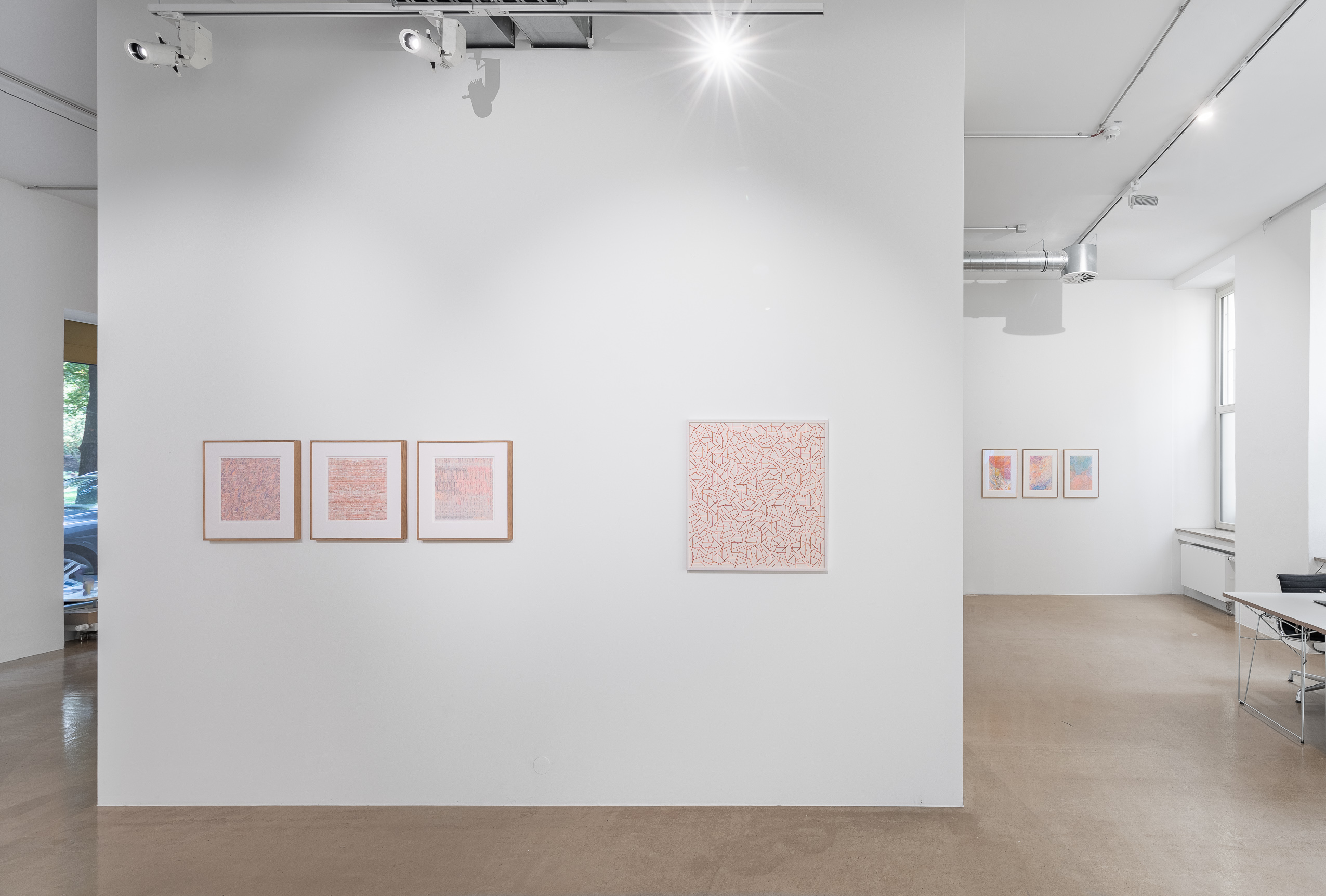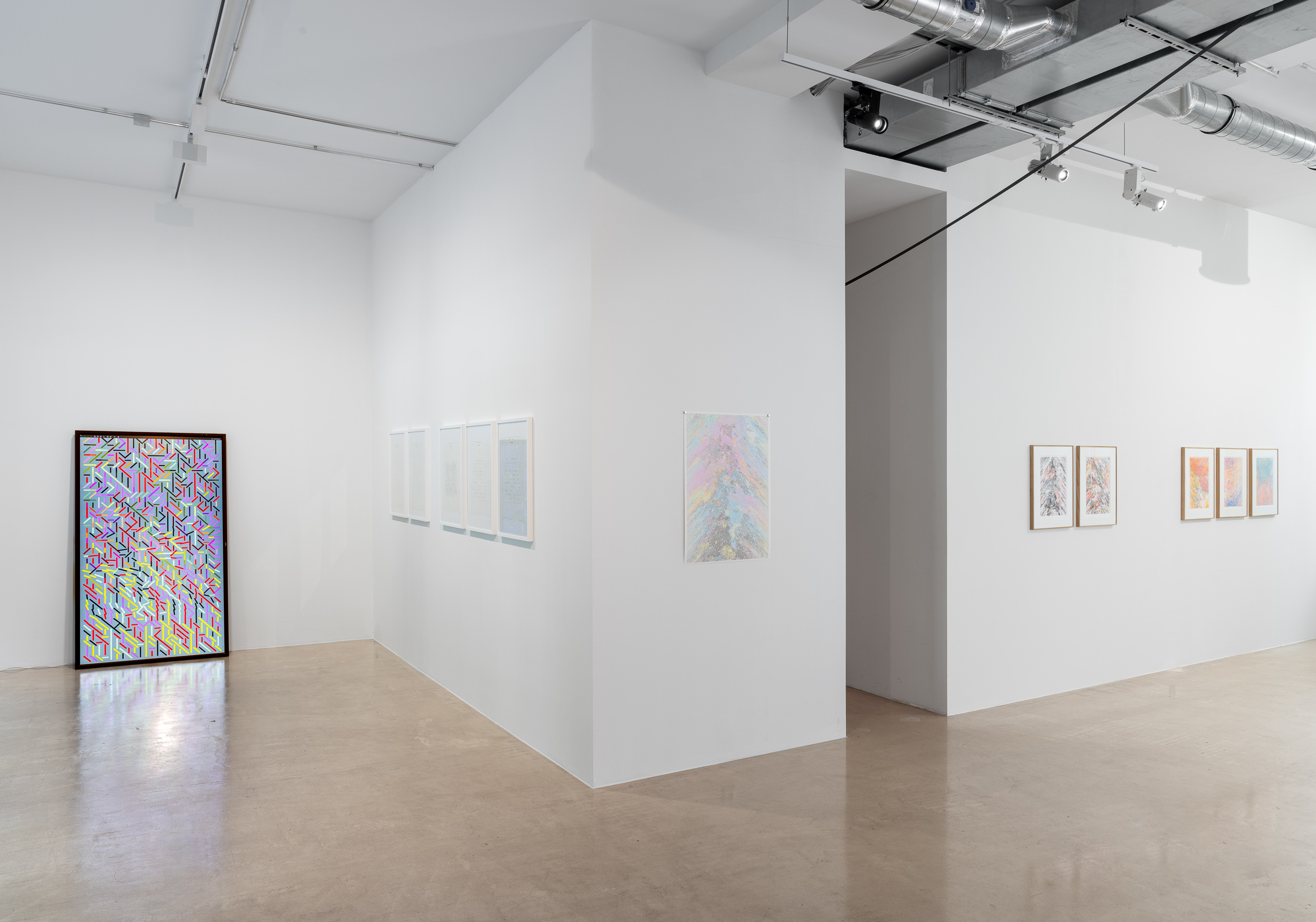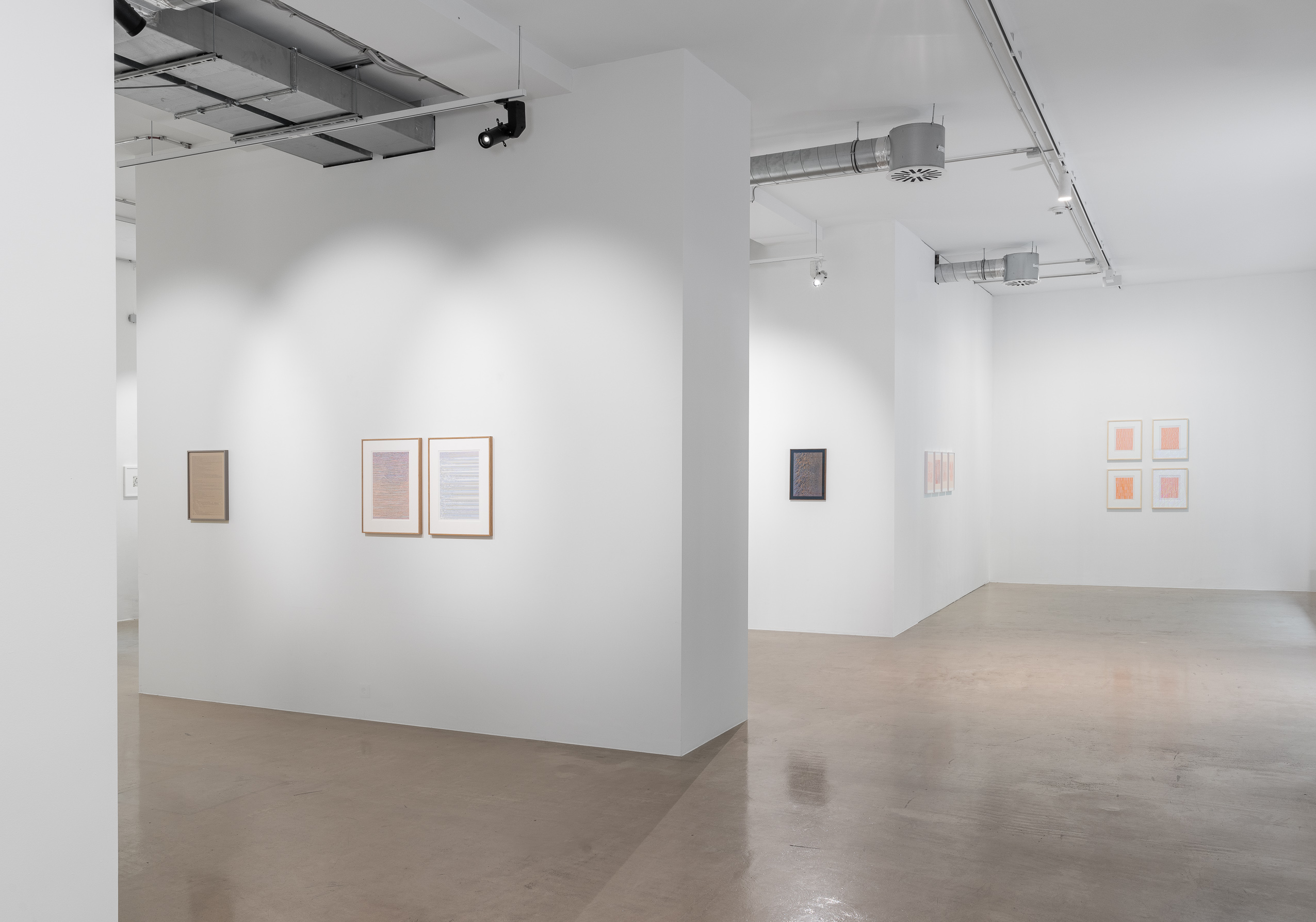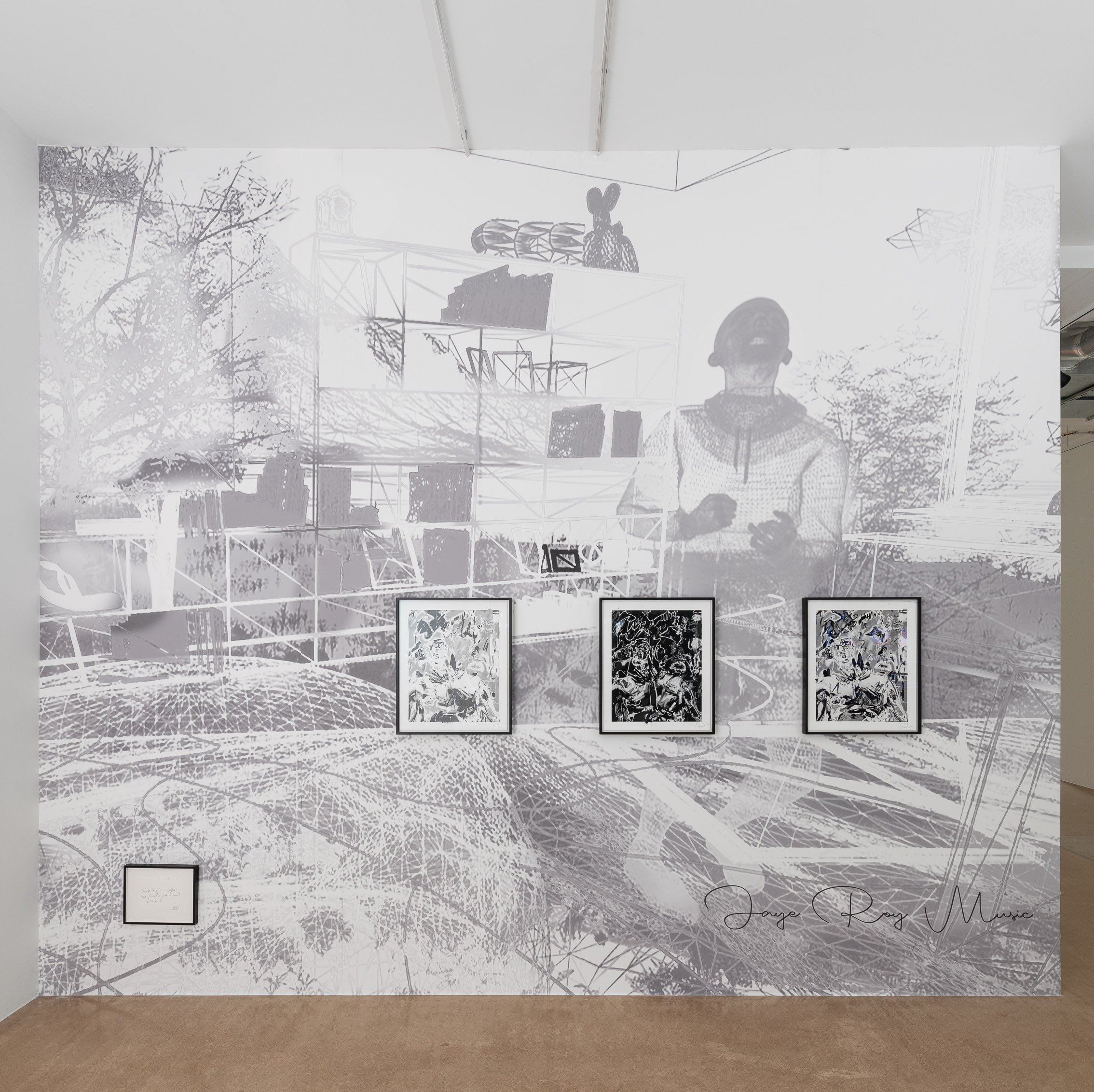ANGLES MORTS
In the exhibition ‘Angles Morts’, LOHAUS SOMINSKY is showing new works by the artist Harm van den Dorpel in combination with works by Vera Molnár, who is known for her pioneering work in computer and generative art. The exhibition presents the result of an impressive exploration of Harm van den Dorpel's artistic engagement with the roots of generative art.
Since 2019, Harm van den Dorpel has dedicated himself to researching artists such as Anni Albers, Vera Molnár, Charlotte Posenenske and Tauba Auerbach, who are known for their work with two-dimensional grid patterns. This research is part of his endeavour to explore his own roots in generative art and to identify his influences.
It should be noted that the artists listed are all women. In his research, Van den Dorpel recognises a dominance of female artists in the field of generative art. He considers a historical connection between the systematic arrangement of recurring elements in grid patterns and the craft of weaving, an activity traditionally dominated by women.
In his work, the artist explores the complexity of works by female artists such as Anni Albers. While it would have been technically easy to programme an algorithm that replicated her triangle patterns, it turned out that randomly placing the triangles did not achieve the desired aesthetic effect. Van den Dorpel realised that Albers must have formulated clear rules in her head, which she applied algorithmically to each cell of the grid. This realisation led to a deep respect for the invisible structures and thought processes hidden in the works of Albers and other female generative artists.
Unlike Albers, Vera Molnár worked with computer technology, but it was very limited, had no screens and provided only simple outputs that she had to manually translate into physical objects. These processes were labour intensive and resulted in small imperfections, which Van den Dorpel particularly appreciates.
Van den Dorpel uses modern algorithms and a plotter to imitate and further develop the aesthetics and methodology of his role models. A plotter is a specialised printer that creates precise technical drawings and graphics by moving pens or markers across the paper on an X-Y axis. Unlike conventional printers, which apply ink in lines from top to bottom, the plotter draws lines in different directions. This process gives the work an organic quality that goes beyond the precision of digital prints. The plotter draws lines in all directions and through the slow, mechanical movement creates unique and unrepeatable results that bring a human unpredictability to the digital works.
His interest in the methods of these artists led van den Dorpel to question and optimise his own processes. Despite his technological tools, he seeks a connection to the artisanal and intellectual approaches of his predecessors. The exhibition ‘Angles Morts’ offers a deep insight into these complex interactions between historical influences and modern technologies.
A recurring theme in van den Dorpel's practice is the instability of the digital medium, where any specific idea or form of expression is difficult to grasp. This instability avoids a fixed, definitive statement and emphasises an open system. Reflecting on the historical role of women in computational art and their often overlooked contributions, van den Dorpel honours the rigorous and visionary work of these pioneers.
‘Angles Morts’ invites visitors to explore these complex and profound relationships.
LOHAUS SOMINSKY zeigt in der kommenden Ausstellung "Angles Morts" neue Werke des Künstlers Harm van den Dorpel in Kombination mit Werken von Vera Molnár, die für ihre Pionierarbeit in der Computer- und generative Kunst bekannt ist. Die Ausstellung präsentiert das Resultat einer eindrucksvollen Untersuchung der künstlerischen Auseinandersetzung Harm van den Dorpels mit den Wurzeln der generativen Kunst.
Seit 2019 widmet sich Harm van den Dorpel der Erforschung von Künstlerinnen wie Anni Albers, Vera Molnár, Charlotte Posenenske, Hanne Darboven und Tauba Auerbach, die für ihre Arbeiten mit zweidimensionalen Gittermustern bekannt sind. Diese Forschung ist Teil seiner Bemühungen, seine eigenen Wurzeln in der generativen Kunst zu ergründen und seine Einflüsse zu identifizieren.
Dabei ist zu bemerken, dass die aufgelisteten Künstlerinnen alle Frauen sind. Van den Dorpel erkennt in seinen Nachforschungen eine Dominanz weiblicher Kunstschaffenden im Feld der generativen Kunst. Er erwägt eine historische Verbindung zwischen der systematischen Anordnung wiederkehrender Elemente in Gittermustern und dem Handwerk der Weberei, einer traditionell von Frauen dominierten Tätigkeit.
In seiner Arbeit erforscht der Künstler die Komplexität der Werke von Künstlerinnen, wie beispielsweise Anni Albers. Während es technisch einfach gewesen wäre, einen Algorithmus zu programmieren, der ihre Dreiecksmuster replizierte, stellte sich heraus, dass das zufällige Platzieren der Dreiecke nicht die gewünschte ästhetische Wirkung erzielte. Van den Dorpel erkannte, dass Albers klare Regeln in ihrem Kopf formuliert haben musste, die sie algorithmisch auf jede Zelle des Rasters anwandte. Diese Erkenntnis führte zu einem tiefen Respekt für die unsichtbaren Strukturen und Gedankengänge, die in den Werken von Albers und anderen Künstlerinnen der generativen Kunst verborgen liegen.
Anders als Albers, arbeitete Vera Molnár mit Computertechnologie, die jedoch sehr begrenzt war, keine Bildschirme hatte und nur einfache Ausgaben lieferte, die sie manuell in physische Objekte umsetzen musste. Diese Prozesse waren arbeitsintensiv und führten zu kleinen Makeln, die Van den Dorpel besonders schätzt.
In seinem Werksprozess verwendet van den Dorpel moderne Algorithmen und einen Plotter, um die Ästhetik und Methodik seiner Vorbilder nachzuahmen und weiterzuentwickeln. Ein Plotter ist ein spezieller Drucker, der präzise technische Zeichnungen und Grafiken erstellt, indem er Stifte oder Marker auf einer X-Y-Achse über das Papier bewegt. Im Gegensatz zu herkömmlichen Druckern, die Tinte in Zeilen von oben nach unten auftragen, zeichnet der Plotter Linien in verschiedenen Richtungen. Dieser Prozess verleiht den Arbeiten eine organische Qualität, die über die Präzision digitaler Drucke hinausgeht. Der Plotter zieht Linien in alle Richtungen und erzeugt durch die langsame, mechanische Bewegung einzigartige und nicht wiederholbare Ergebnisse, die eine menschliche Unvorhersehbarkeit in die digitalen Werke einfließen lassen.
Sein Interesse an den Methoden dieser Künstlerinnen führte van den Dorpel dazu, seine eigenen Prozesse zu hinterfragen und zu optimieren. Trotz seiner technologischen Hilfsmittel sucht er nach einer Verbindung zu den handwerklichen und geistigen Ansätzen seiner Vorgängerinnen. Die Ausstellung "Angles Morts" bietet einen tiefen Einblick in diese komplexen Wechselwirkungen zwischen historischen Einflüssen und modernen Technologien.
Ein wiederkehrendes Thema in van den Dorpels Praxis ist die Instabilität des digitalen Mediums, wo jede spezifische Idee oder Ausdrucksform schwer zu fassen ist. Diese Instabilität vermeidet eine feste, endgültige Aussage und betont ein offenes System. In seiner Reflexion über die historische Rolle von Frauen in der Rechenkunst und ihre oft übersehenen Beiträge, würdigt van den Dorpel die rigorose und visionäre Arbeit dieser Pionierinnen.
"Angles Morts" lädt die Besucher ein, diese vielschichtigen und tiefgründigen Beziehungen zu erkunden.
Further exhibitions



